
Higher Education News , Tips for Online Students

Online vs Traditional School: A Thorough Analysis
Updated: August 17, 2022
Published: January 23, 2017

[vc_row][vc_column][vc_column_text]
In the United States alone, data from the National Center for Education Statistics reported that 43% of students were enrolled in remote instruction (online school) in early 2021. The rise of online education can be witnessed around the world as technology continues to advance. The increased attendance and desire for online colleges during COVID were also to be expected. In this article, we will assess the differences between online school vs. traditional school.
By the end of the article, you will be able to answer, “is online college better?” than traditional colleges.

What is Online School and Is it Respected?
Online school is instruction and education that takes place digitally via the Internet. Online degrees vs traditional degrees are those earned online rather than in-person and on campus.
Online school may also be called distance learning, virtual schooling, or e-learning.
The big question when considering attending an online school that often arises is whether or not your future employer (or future educational institution) will respect or accept your online degree.
Since online school is becoming more popular, the social sentiments around online schooling are too. In fact, 83% of surveyed business leaders expressed that an online degree from a “well-known” institute holds the same value as one earned on campus.
One of the main things to look for when attending an online school is its accreditation status. Accreditation is the process of having an independent third-party evaluate an institution to ensure its credibility. The third-party will confirm whether or not the institution is equipped to deliver its promises and mission. For some graduate programs, they will only accept an undergraduate degree from an accredited program. This is another reason why it’s so important to check for accreditation when enrolling at an online school.
Advantages of Online School
When you consider the various benefits of online school, it’s clear to see why the option is becoming so popular. Here’s a look at some of the advantages:
Affordability
Since online schools don’t necessarily have to operate a campus and cover those exorbitant costs, they tend to be more cost-effective and affordable than their traditional counterparts. In fact, you can even find online colleges that are tuition-free. For example, the University of the People is just that – a 100% online and tuition-free institution. There are some fees associated with attendance, but they add up to much less than that of the tuition at other schools.
Flexibility
Online school also tends to be more flexible in terms of scheduling than a traditional college. The reason is when it comes to earning an online degree vs on-campus, you can do so at your own pace. If classes are pre-recorded, then it’s up to the student to decide when to learn. In a traditional college setting, there’s a set schedule as to when the professor teaches a specific subject. There’s also a cap on how many students can attend each lecture. This means that some students may end up having to wait another semester or quarter (or in the worst case a whole year) to get into a class they might need to graduate.
Location independent
Geographic barriers can hinder one’s ability to attend a certain institution. Whether that is because of cost, visas, or responsibilities at home, or an existing job, learning online removes the element of the location as a concern. With online college, you can learn virtually from anywhere you choose.
Fewer distractions
Depending on how you set up your learning environment to attend the online school, it can be designed to be less distracting than that of an on-campus setting. Peers may distract you in class. Students who get up or chat during tests or lectures can hinder their ability to learn. With an online school, your environment ends up being more within your control.
Online schools also offer the option to learn at your own pace. You can enroll part-time or full-time, log on morning or night, and choose to work through coursework quickly or slowly.[/vc_column_text][/vc_column][/vc_row][vc_row][vc_column][vc_single_image image=”48358″ img_size=”full” onclick=”custom_link” img_link_target=”_blank” css_animation=”flipInX” link=”https://go.uopeople.edu/admission-application.html” el_id=”cta-blog-picture”][/vc_column][/vc_row][vc_row][vc_column][vc_column_text]
Disadvantages of Online School
With so many benefits of online school, you may wonder, “What’s the downside?” Well, that really depends on you!
Requires self-motivation
With online school being self-paced and offering so much flexibility, it’s up to you to remain self-motivated and engaged. You won’t be surrounded by students or expected to show up to a lecture. Instead, it’s up to you to log on, maintain a schedule , and stay focused.
Technical considerations
With online school, there’s a requirement for sound technology to support your learning endeavors. The good news is that schools like the University of the People require nothing more than a strong internet connection and a compatible device. Once you have your tech stack sorted, you can log on and learn from anywhere in the world!
Advantages of Traditional School
Now that we’ve touched on the good and the bad of online school, it’s only fair to consider the advantages of traditional school.
Take a look:
Social experience
For some, the social experience of college or learning alongside peers is something that cannot be replaced. Students have a chance to develop in-person social skills while attending school.
Public speaking skills
In school, you may be tasked with assignments and projects that require you to get up in front of large amounts of students to present. These kinds of activities will help you build public speaking skills. While it is possible you’d do this in an online school via video, the atmosphere feels different when you can sense the energy of your audience in person.
Hands-on lab sessions
There are some subjects that are completely different in person. For example, think about the need for hands-on labs when it comes to learning hard sciences.
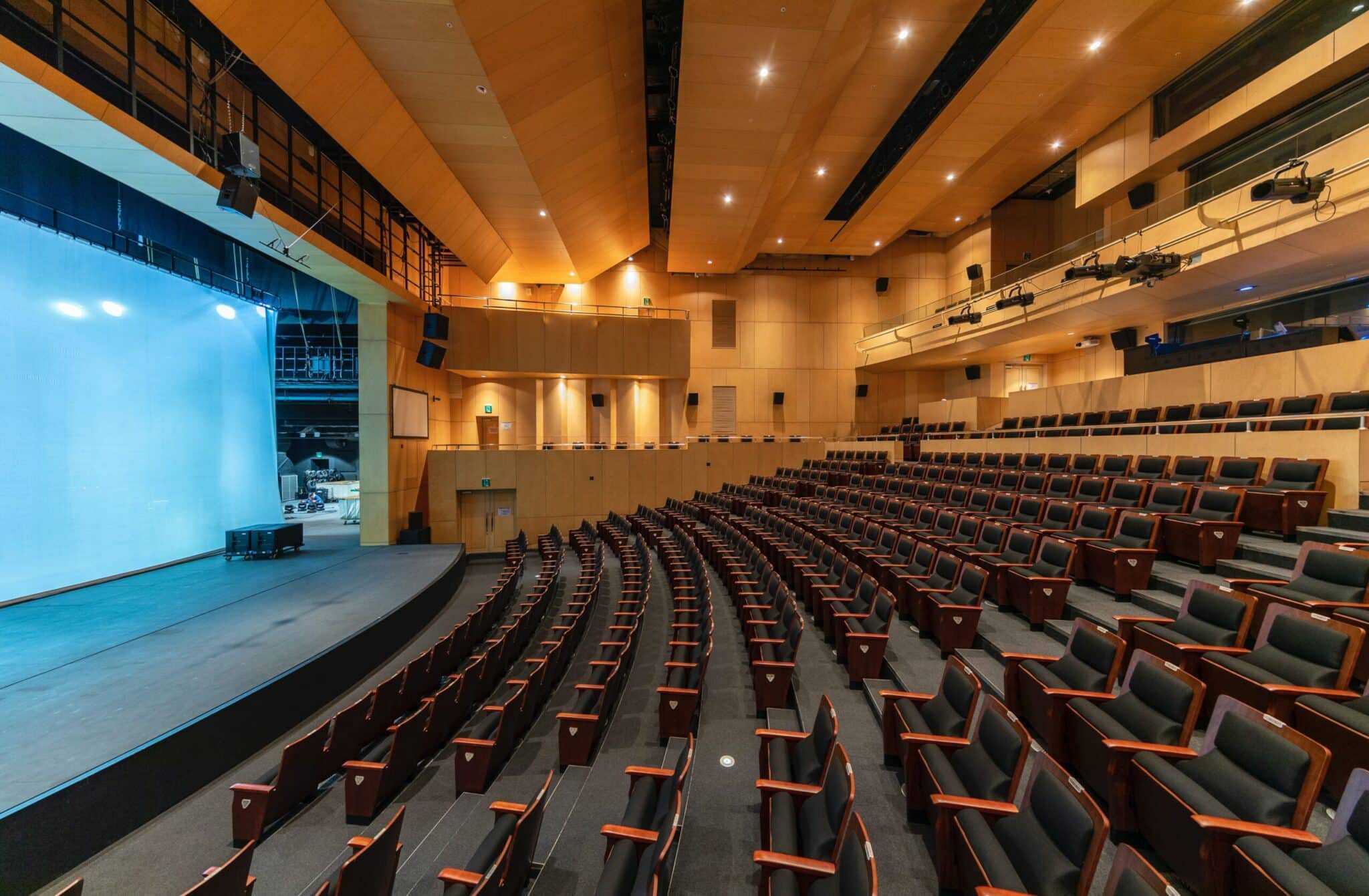
Disadvantages of Traditional School
It’s pretty safe to say that when comparing online school vs traditional school, online school’s advantages tend to be traditional school’s disadvantages. You can bank on paying a higher cost to attend a traditional school and you won’t have flexible scheduling. Additionally, you may have to deal with:
Commute time
If you have classes on campus, you’ll have to find your way to campus, which adds commute time to your schedule.
Loss of individualization
It may be the case that you find yourself in a lecture hall with 300 students and the professor will never know your name. Traditional education tends to operate under a one-size-fits-all model. On the other hand, online school is more malleable and you can access online learning materials that are better suited to your learning style.
Online Learning at the University of the People
After reading this, you may be more interested in attending online school than ever before. It makes sense why you’d feel that way!
University of the People, a tuition-free university , offers a variety of degree-granting and certificate programs. For example, you can earn your degree (at various levels such as associate’s, bachelor’s, and master’s) in Health Science, Education, Computer Science, or Business Administration. Take a look. And, we also are accredited .
Closing Thoughts
Comparing the pros and cons of online school vs traditional school will look different for everyone. It’s a personal choice as to what you think will work better for you, your career and educational goals, and your own personal situation. While we promised to answer is online school better than traditional, the only answer can come from you and how you feel about it.
We hope we’ve helped you to better understand the differences and benefits of each style of instruction!
[/vc_column_text][/vc_column][/vc_row][vc_row][vc_column width=”1/4″][vc_single_image image=”50504″ img_size=”medium” alignment=”center” style=”vc_box_circle_2″][/vc_column][vc_column width=”3/4″][vc_custom_heading text=” “I couldn’t apply for any loans so I decided not to go to college…then I was told about UoPeople“ ” font_container=”tag:h3|text_align:left|color:%234b345d” use_theme_fonts=”yes” css=”.vc_custom_1653909754521{margin-top: 10px !important;}”][vc_column_text css=”.vc_custom_1653909787168{margin-top: 10px !important;margin-bottom: 10px !important;}”]
Nathaly Ordonez
Business Administration Student, US
[/vc_column_text][vc_btn title=” BECOME A STUDENT ” style=”custom” custom_background=”#e90172″ custom_text=”#ffffff” shape=”square” link=”url:https%3A%2F%2Fgo.uopeople.edu%2Fadmission-application.html” el_class=”become_btn”][/vc_column][/vc_row]
Related Articles
How do traditional and online learning compare?

.chakra .wef-1c7l3mo{-webkit-transition:all 0.15s ease-out;transition:all 0.15s ease-out;cursor:pointer;-webkit-text-decoration:none;text-decoration:none;outline:none;color:inherit;}.chakra .wef-1c7l3mo:hover,.chakra .wef-1c7l3mo[data-hover]{-webkit-text-decoration:underline;text-decoration:underline;}.chakra .wef-1c7l3mo:focus,.chakra .wef-1c7l3mo[data-focus]{box-shadow:0 0 0 3px rgba(168,203,251,0.5);} David Deming

.chakra .wef-9dduvl{margin-top:16px;margin-bottom:16px;line-height:1.388;font-size:1.25rem;}@media screen and (min-width:56.5rem){.chakra .wef-9dduvl{font-size:1.125rem;}} Explore and monitor how .chakra .wef-15eoq1r{margin-top:16px;margin-bottom:16px;line-height:1.388;font-size:1.25rem;color:#F7DB5E;}@media screen and (min-width:56.5rem){.chakra .wef-15eoq1r{font-size:1.125rem;}} Future of Work is affecting economies, industries and global issues

.chakra .wef-1nk5u5d{margin-top:16px;margin-bottom:16px;line-height:1.388;color:#2846F8;font-size:1.25rem;}@media screen and (min-width:56.5rem){.chakra .wef-1nk5u5d{font-size:1.125rem;}} Get involved with our crowdsourced digital platform to deliver impact at scale
Stay up to date:, future of work.
Online learning has been viewed as the disruptive innovation in higher education today, with traditional classroom instruction at risk of being replaced by superstar professors teaching elabourate courses developed by teams – or by Massive Open Online Courses (MOOCs) offering instruction to students worldwide (see, e.g., Christensen and Eyring 2011, Cowen and Tabarrok 2014). Even if they do not revolutionise higher education, online courses are a potentially important source of cost savings in higher education, with the primary channel being reduced labour costs through larger class size and less face-to-face interaction (Bowen 2012).
The potential for disruption can be seen in the tremendous recent growth in the granting of online bachelor’s degrees – 2012 saw 23 large for-profit online campuses award nearly 75,000 bachelor’s degrees in the United States, more than 5% of the total and nearly twenty times as many online bachelor’s degrees as were granted just a decade before. Although the growth of online education has until recently occurred mostly in the for-profit sector, public institutions are increasingly competing for students online – perhaps in response to cost pressures (Hoxby 2014).
What do we know about the performance of online education thus far? Scholars have been stymied in evaluating online education because:
- Data on the granting of online degrees has been limited, and
- Comparing the outcomes of students enrolled in online programs with those of students in traditional programs is plagued by differences between online and traditional students other than their degrees.
In two recent papers we have begun to fill the gap in our knowledge, collecting evidence on both the cost savings of online education, and employers’ perceptions of the quality of online degrees (Deming et al. 2014, 2015).
The most basic question about online programs is whether they can actually reduce the cost of tertiary education. To answer this question, we use data from the Integrated Postsecondary Education Data System (IPEDS) of the U.S. Department of Education to examine the relationship between a school’s tuition (and fees) and the fraction of students enrolled in an online program (Deming et al. 2015). We find evidence that there are modestly lower prices charged at schools at which more students are enrolled online. A 10% increase in the fraction of students enrolled online is associated with roughly a 1.4% reduction in tuition. We also find that from 2006 to 2013, the price of a full-time undergraduate online education (among private non-profit and for-profit schools) declined by 34%. For comparison, over the same period, the price of a traditional education at a large for-profit or private non-profit school dropped by about 8%, and tuition at all non-selective four-year public institutions increased by 9.2%.
Thus, we find some evidence that colleges are charging lower prices for online coursework, suggesting that advances in online learning technology might be able to ‘bend the cost curve’ in higher education.
This finding raises another question: does the quality of education suffer when content is delivered online? An initial randomised trial of a college statistics course found no difference in student achievement in online versus in-person course sections (Bowen et al. 2014). But two recent studies have found negative impacts of switching from in-person to online instruction on course final grades in an introductory economics class (Alpert et al. 2014, Joyce et al. 2014).
One would also like to know how employers view online degrees compared with traditional degrees. An important challenge in any study of labour market outcomes associated with the degree an individual acquires is that individuals select into their degree programs (or are selected into them) based on a range of characteristics that might also determine labour market outcomes. It may not be possible to control for these differences to the extent that they are not observable to the researcher.
To learn how employers view online degrees – while holding other characteristics of applicants constant – we recently conducted a ‘resume audit experiment’ in which we submitted more than 10,000 ‘synthetic’ (fictional, but very realistic) resumes to real job openings, with the type of degree randomly assigned across otherwise identical resumes (Deming et al. 2014). This setup allows us to isolate the effect of just the degree on employers’ likelihood of calling an applicant back.
We find that for business job vacancies (the largest group of job postings) that require a bachelor’s degree, employers strongly prefer applicants with degrees from (nonselective or selective) public institutions as opposed to applicants with degrees from for-profits. The biggest callback ‘penalty’ is imposed on the applicants with an online for-profit degree. Callback rates were 8.5% for the resumes with (randomly assigned) nonselective or selective public institution bachelor degrees and around 7.8% for ‘brick and mortar’ for-profits. But they were only around 6.3% for the online for-profits. Thus callback rates were 26% lower for the online for-profits than for the publics (22% in the regression-adjusted figures).
Overall our findings suggest that online education is indeed a technological advance that can succeed in cutting the costs of a college degree. But preliminary evidence suggests that – at least for the time being – the new technology comes at a cost of quality: it does not produce a product perceived by employers to be as good as one from the traditional, more expensive mode of production.
Alpert, W T, Kenneth A. Couch, and Oskar R. Harmon (2014). “Online, Blended and Classroom Teaching of Economics Principles: A Randomized Experiment.” Working paper, University of Connecticut, Stamford.
Bowen, William G. (2012). “The ‘Cost Disease’ in Higher Education: Is Technology the Answer.” The Tanner Lectures, Stanford University.
Bowen, William G., Matthew M. Chingos, Kelly A. Lack, and Thomas I. Nygren (2014). “Interactive Learning Online at Public Universities: Evidence from a Six-Campus Randomized Trial,” Journal of Policy Analysis and Management , 33(1), pp. 94-111
Christensen, Clayton M., and Henry J. Eyring (2011). The Innovative University: Changing the DNA of Higher Education from the Inside Out , New York, NY: John Wiley & Sons.
Cowen, Tyler, and Alex Tabarrok (2014). “The Industrial Organization of Online Education.” The American Economic Review , 104 (5), pp. 519-22.
Deming, David J., Claudia Goldin, Lawrence F. Katz, and Noam Yuchtman (2015). “Can Online Learning Bend the Higher Education Cost Curve?” National Bureau of Economic Research Working Paper 20890.
Deming, David J., Noam Yuchtman, Amira Abulafi, Claudia Goldin, and Lawrence F. Katz (2014). “The Value of Postsecondary Credentials in the Labour Market: An Experimental Study.” National Bureau of Economic Research Working Paper No. 20528.
Hoxby, Caroline M. (2014). “The Economics of Online Postsecondary Education: MOOCs, Nonselective Education, and Highly Selective Education.” The American Economic Review 104(5), pp. 528-33.
Joyce, Theodore J., Sean Crockett, David A. Jaeger, Onur Altindag, and Stephen D. O’Connell (2014). “Does Classroom Time Matter? A Randomized Field Experiment of Hybrid and Traditional Lecture Formats in Economics.” National Bureau of Economic Research Working Paper 20006.
This article is published in collaboration with VoxEU . Publication does not imply endorsement of views by the World Economic Forum.
To keep up with Agenda subscribe to our weekly newsletter .
Author: David Deming is an associate professor at the Harvard Graduate School of Education and a faculty research fellow at the National Bureau of Economic Research. Claudia Goldin is the Henry Lee Professor of Economics at Harvard University and director of the NBER’s Development of the American Economy program. Lawrence F. Katz is the Elisabeth Allison Professor of Economics at Harvard University and a Research Associate of the National Bureau of Economic Research. Noam Yuchtman is an Assistant Professor at the Haas School of Business at UC-Berkeley and a Faculty Research Fellow at the NBER.
Share this:
- Share on Facebook (Opens in new window)
- Click to share on Twitter (Opens in new window)
- Click to share on LinkedIn (Opens in new window)
- Click to share on WhatsApp (Opens in new window)
Don't miss any update on this topic
Create a free account and access your personalized content collection with our latest publications and analyses.
License and Republishing
World Economic Forum articles may be republished in accordance with the Creative Commons Attribution-NonCommercial-NoDerivatives 4.0 International Public License, and in accordance with our Terms of Use.
The views expressed in this article are those of the author alone and not the World Economic Forum.
Related topics:
The agenda .chakra .wef-n7bacu{margin-top:16px;margin-bottom:16px;line-height:1.388;font-weight:400;} weekly.
A weekly update of the most important issues driving the global agenda
.chakra .wef-1dtnjt5{display:-webkit-box;display:-webkit-flex;display:-ms-flexbox;display:flex;-webkit-align-items:center;-webkit-box-align:center;-ms-flex-align:center;align-items:center;-webkit-flex-wrap:wrap;-ms-flex-wrap:wrap;flex-wrap:wrap;} More on Jobs and the Future of Work .chakra .wef-17xejub{-webkit-flex:1;-ms-flex:1;flex:1;justify-self:stretch;-webkit-align-self:stretch;-ms-flex-item-align:stretch;align-self:stretch;} .chakra .wef-nr1rr4{display:-webkit-inline-box;display:-webkit-inline-flex;display:-ms-inline-flexbox;display:inline-flex;white-space:normal;vertical-align:middle;text-transform:uppercase;font-size:0.75rem;border-radius:0.25rem;font-weight:700;-webkit-align-items:center;-webkit-box-align:center;-ms-flex-align:center;align-items:center;line-height:1.2;-webkit-letter-spacing:1.25px;-moz-letter-spacing:1.25px;-ms-letter-spacing:1.25px;letter-spacing:1.25px;background:none;padding:0px;color:#B3B3B3;-webkit-box-decoration-break:clone;box-decoration-break:clone;-webkit-box-decoration-break:clone;}@media screen and (min-width:37.5rem){.chakra .wef-nr1rr4{font-size:0.875rem;}}@media screen and (min-width:56.5rem){.chakra .wef-nr1rr4{font-size:1rem;}} See all

The cybersecurity industry has an urgent talent shortage. Here’s how to plug the gap
Michelle Meineke
April 28, 2024

Strategic Cybersecurity Talent Framework

The green skills gap: Educational reform in favour of renewable energy is now urgent
Roman Vakulchuk
April 24, 2024

How the ‘NO, NO’ Matrix can help professionals plan for success
April 19, 2024

The State of Social Enterprise: A Review of Global Data 2013–2023

From 'Quit-Tok' to proximity bias, here are 11 buzzwords from the world of hybrid work
Kate Whiting
April 17, 2024
- Share full article
Advertisement
Supported by
Student Opinion
Is Online Learning Effective?
A new report found that the heavy dependence on technology during the pandemic caused “staggering” education inequality. What was your experience?

By Natalie Proulx
During the coronavirus pandemic, many schools moved classes online. Was your school one of them? If so, what was it like to attend school online? Did you enjoy it? Did it work for you?
In “ Dependence on Tech Caused ‘Staggering’ Education Inequality, U.N. Agency Says ,” Natasha Singer writes:
In early 2020, as the coronavirus spread, schools around the world abruptly halted in-person education. To many governments and parents, moving classes online seemed the obvious stopgap solution. In the United States, school districts scrambled to secure digital devices for students. Almost overnight, videoconferencing software like Zoom became the main platform teachers used to deliver real-time instruction to students at home. Now a report from UNESCO , the United Nations’ educational and cultural organization, says that overreliance on remote learning technology during the pandemic led to “staggering” education inequality around the world. It was, according to a 655-page report that UNESCO released on Wednesday, a worldwide “ed-tech tragedy.” The report, from UNESCO’s Future of Education division, is likely to add fuel to the debate over how governments and local school districts handled pandemic restrictions, and whether it would have been better for some countries to reopen schools for in-person instruction sooner. The UNESCO researchers argued in the report that “unprecedented” dependence on technology — intended to ensure that children could continue their schooling — worsened disparities and learning loss for hundreds of millions of students around the world, including in Kenya, Brazil, Britain and the United States. The promotion of remote online learning as the primary solution for pandemic schooling also hindered public discussion of more equitable, lower-tech alternatives, such as regularly providing schoolwork packets for every student, delivering school lessons by radio or television — and reopening schools sooner for in-person classes, the researchers said. “Available evidence strongly indicates that the bright spots of the ed-tech experiences during the pandemic, while important and deserving of attention, were vastly eclipsed by failure,” the UNESCO report said. The UNESCO researchers recommended that education officials prioritize in-person instruction with teachers, not online platforms, as the primary driver of student learning. And they encouraged schools to ensure that emerging technologies like A.I. chatbots concretely benefited students before introducing them for educational use. Education and industry experts welcomed the report, saying more research on the effects of pandemic learning was needed. “The report’s conclusion — that societies must be vigilant about the ways digital tools are reshaping education — is incredibly important,” said Paul Lekas, the head of global public policy for the Software & Information Industry Association, a group whose members include Amazon, Apple and Google. “There are lots of lessons that can be learned from how digital education occurred during the pandemic and ways in which to lessen the digital divide. ” Jean-Claude Brizard, the chief executive of Digital Promise, a nonprofit education group that has received funding from Google, HP and Verizon, acknowledged that “technology is not a cure-all.” But he also said that while school systems were largely unprepared for the pandemic, online education tools helped foster “more individualized, enhanced learning experiences as schools shifted to virtual classrooms.” Education International, an umbrella organization for about 380 teachers’ unions and 32 million teachers worldwide, said the UNESCO report underlined the importance of in-person, face-to-face teaching. “The report tells us definitively what we already know to be true, a place called school matters,” said Haldis Holst, the group’s deputy general secretary. “Education is not transactional nor is it simply content delivery. It is relational. It is social. It is human at its core.”
Students, read the entire article and then tell us:
What findings from the report, if any, surprised you? If you participated in online learning during the pandemic, what in the report reflected your experience? If the researchers had asked you about what remote learning was like for you, what would you have told them?
At this point, most schools have returned to in-person teaching, but many still use technology in the classroom. How much tech is involved in your day-to-day education? Does this method of learning work well for you? If you had a say, would you want to spend more or less time online while in school?
What are some of the biggest benefits you have seen from technology when it comes to your education? What are some of the biggest drawbacks?
Haldis Holst, UNESCO’s deputy general secretary, said: “The report tells us definitively what we already know to be true, a place called school matters. Education is not transactional nor is it simply content delivery. It is relational. It is social. It is human at its core.” What is your reaction to that statement? Do you agree? Why or why not?
As a student, what advice would you give to schools that are already using or are considering using educational technology?
Students 13 and older in the United States and Britain, and 16 and older elsewhere, are invited to comment. All comments are moderated by the Learning Network staff, but please keep in mind that once your comment is accepted, it will be made public and may appear in print.
Find more Student Opinion questions here. Teachers, check out this guide to learn how you can incorporate these prompts into your classroom.
Natalie Proulx joined The Learning Network as a staff editor in 2017 after working as an English language arts teacher and curriculum writer. More about Natalie Proulx

Online Education or Traditional: Which is Right for You?

The rapid advancement of technology has transformed the educational landscape, offering learners more options than ever before. With the rise of online education, the choice between pursuing a traditional brick-and-mortar education or opting for online learning has become a crucial consideration for students. In this blog, we will explore the key factors to help you determine which mode of education, online or traditional, is the right fit for you.
Flexibility and Convenience
One of the primary advantages of online education is the flexibility it offers. Online courses provide the convenience of studying at your own pace and location. If you have other commitments such as work or family responsibilities, online education allows you to fit your studies into your schedule. On the other hand, traditional education requires adherence to a fixed schedule and location, with specific class times and campus attendance. Consider your lifestyle and time management skills when deciding which mode of education aligns better with your needs.
Learning Style and Personal Preferences
Reflect on your preferred learning style and how it aligns with each mode of education. Online education typically involves self-directed learning, with a greater emphasis on reading, online discussions, and multimedia resources. If you are self-motivated, enjoy independent learning, and are comfortable with technology, online education may suit your learning style. However, if you thrive in face-to-face interactions, benefit from real-time discussions, and prefer hands-on activities, traditional education may be a better fit.
Support and Interaction
Consider the level of support and interaction you desire from your educational experience. Traditional education provides immediate access to instructors and classmates, fostering direct interaction, immediate feedback, and collaborative learning opportunities. In contrast, online education relies on digital platforms for communication, which may require self-initiative and proactive engagement. Assess your preferred level of interaction and support when choosing between the two modes of education.
Resources and Networking Opportunities
Traditional education often offers access to extensive resources, such as libraries, laboratories, and physical campus facilities. It also provides opportunities for face-to-face networking, forming connections with professors, classmates, and alumni. Online education, however, offers its own set of resources, including digital libraries, multimedia content, and online communities. Consider the resources and networking opportunities that are essential for your educational and career goals.
Cost and Accessibility
The financial aspect is a critical factor to consider when deciding between online and traditional education. Online courses often come at a lower cost compared to traditional education, as they eliminate expenses associated with commuting, campus facilities, and other overheads. Additionally, online education can be more accessible for individuals who face geographical constraints or have limited mobility. Evaluate your budget and accessibility requirements to determine which option is more feasible for you.
Choosing between online education and traditional education is a highly individualized decision. Assess your priorities, preferences, and goals to determine which mode of education aligns best with your needs. Consider factors such as flexibility, learning style, support and interaction, resources, networking opportunities, cost, and accessibility. Remember that both online and traditional education have their own merits and limitations. Ultimately, selecting the right mode of education will contribute to a fulfilling and successful learning experience that sets you on the path to achieve your academic and career aspirations.
Latest Blog

Most Popular Courses
- Master of Arts in Elementary Education
- Power Strategies for Effective Teaching
- Power Strategies for Classroom Assessment
- Classroom Management
- Child and Adolescent Development
- Curriculum and Assessment
- Special Needs Students
- Principles of School Leadership and Management
- Education Law
- Education Finance
School of Education Programs
- Doctor of Education in Educational Leadership
- Master of Education in Special Education
- Master of Education in English as a Second Language
- Master of Education in Educational Administration
- Master of Arts in Secondary Education

7665 S Research Dr. Tempe, Arizona, USA Phone: +1 480 428-6034 Email: [email protected]
Quick Links

It gives me tremendous pleasure to welcome you to Acacia University. As Provost of this highly innovative and forward-thinking university, I am very pleased to greet you and, on behalf of the faculty and academic staff who are the heart of our growing institution, to invite you to explore these pages to discover what Acacia has to offer you.
As a global institution delivering top-tier distant education programs, Acacia brings together all of the human and technological resources to create a dynamic space where you can truly thrive. You will discover here a learning environment that is highly interactive, connecting faculty and students from every quadrant of the globe.
We are proud that our award-winning faculty are widely acknowledged as among the finest in their fields, and their academic credentials and experience make them ideally suited to provide you and your fellow students the education you need for success in life, not just for now but throughout your entire career.
Thank you again for visiting Acacia, and come back often.
On behalf of the faculty and staff of Acacia University it is my pleasure to say welcome. You are invited to experience the challenging and rewarding educational opportunities we offer current and prospective students.
Our academic programs are led by world-class faculty who are leaders in their fields and who have numerous international and national awards. In our online classrooms, you will discover what it is like to be driven by excellence and innovation. Acacia provides its students with the knowledge and skills necessary to increase their potential and to actualize their desired careers. The entire faculty and staff will work closely and productively with you because you are so much more than a student to us; you are a member of our academic family. Together we will excel in the years to come.
Acacia University offers a variety of programs ranging from Master’s to Doctorate degrees in Education and we have expansive plans to offer business degrees in the very near future. We are committed and qualified to provide students an education that is focused on preparing them with the necessary academic and intellectual skills required for their future as well as practical knowledge and skills that are in high demand in today’s global workforce.
We are here to help you realize your full potential and propel you into excellence. On behalf of the Acacia University community, I welcome you and wish you the absolute best in your educational and personal growth. We look forward to having you and serving you along the way.
My best wishes for a successful achievement of your goals and objectives.
Course Select Program Mastering Capital Budgeting Mastering Financial Analysis - Ratios and Returns Mastering Sustainability & Business Mastering Sustainable Supply Chain Management Mastering Change & Innovations Mastering Strategic Management Mastering International Marketing Management - Fundamentals & Analysis Mastering Business Analytics- Fundamentals Mastering Business Analytics - Models & Applications Mastering Operations & Projects Management Mastering Supply Chain Management Mastering Quality Management & Lean Operations Mastering International Supply Chain Management Mastering Supply Chain Implementation in Organisation Mastering Socio-Economics Mastering Economic Growth & Regulatory Framework Mastering Components of Supply Chain Management Mastering Logistics Management Mastering Procurement & Contract Management Mastering Design Thinking Mastering New Venture Development Mastering Plumbing, Electrical and Security Systems in Buildings Mastering in Neural Networks and Reinforcement Learning Mastering Machine Learning with Bayesian Classifier Mastering Cross Culture Business Communication Mastering Group Communication Mastering Accounting Mastering Capital and Revenue Concept Mastering of Data Visualization with Tableau Mastering Neuromarketing Mastering Ethereum & Hyperledger Mastering Human Resource Management Mastering Hazard and Safety Management Mastering Health and Safety Management Mastering Local Government Administration Mastering Local Government Administration Challenges Mastering Operations & Development of Local Government Administration Mastering Personnel Management Mastering Personnel Leadership & Management Planning Mastering Issues & Prospects in Personnel Management Mastering Product Management & Core Market Strategy Mastering Product Concept & Product Decisions Mastering Productivity and Plant Layout Mastering Logistics and Inventory Management Mastering E-Governance Policy and Development Mastering Digital Government, Policy and E-Governance Types Mastering Blockchain Technology Mastering ADR And Negotiation Aspects Mastering Global Dispute Resolution and Consultation Mastering Financial Risk Management Mastering Risk Management - Banks and Insurance Sectors Mastering Operations and Project Management - Background and Competitiveness Mastering Operations & Project Management - Challenges And Success Factors Mastering Supply Chain Planning Mastering Corporate Governance Phases & Operations Mastering Technology Management Mastering Manufacturing Management Mastering Leadership for Change Management Mastering Change Management Process & Models Mastering Change Management Process Mastering Cyber-Governance Mastering E-commerce Mastering Cyber Laws Mastering Public Finance - Income and Expenses Mastering Public Finance - Budgeting & Controls Mastering Public Enterprises Mastering Practical Psychology Mastering Managerial Psychology Mastering E-Commerce Applications Mastering E-Commerce Transactions Mastering E-Commerce Influencing Factors Mastering in Sales & Marketing Strategy Mastering in Sales & Marketing Analytics MBA Essentials with Design Thinking MBA Essentials with Machine Learning MBA Essentials with Business and Sustainability MBA Essentials with Creativity & Innovation Management MBA Essentials with Logistics & Supply Chain Management MBA Essentials with Business Analytics MBA Essentials with Socio Economics MBA Essentials with Data Visualization MBA Essentials with Neuromarketing MBA Essentials with Financial Risk Management MBA Essentials with Blockchain Foundation MBA Essentials with Blockchain Application MBA Essentials with Environment Health and Safety Management Essentials of Financial Management Essentials of Team Management - Nurture your Team Better Essentials of Corporate Social Responsibility Essentials of Sustainability Essentials for Sustainable Business Essentials of Innovation Management Essentials of Strategic Management Essentials of Innovation Management and Leadership Essentials of Strategic Management-Analysis & Framework Essentials of Strategic Change Management & Leadership Essentials of Marketing Management Essentials of Product Management Essentials of Data Visualization using MS Excel Essentials of Data Analytics Essentials of Project Management Essentials of Supply Chain Management Essentials of Quality Management & Lean Operations Essentials of Strategic Leadership & HR Practices Essentials of Strategic HR Planning & Implementation Essentials of Change Management Essentials of Designing Supply Chain Essentials of Supply Chain Management Essentials of Innovation and Entrepreneurship Essentials for Launching your Startup Essentials of Social Innovation & Entrepreneurship Essentials of Strategic Project Management -Initiation and Planning Essentials of Project Management - Execution and Monitoring Essentials of Project Management- Monitoring and Control Essentials of Project Management-Control and Closure Essentials of Design Thinking - Overview Essentials of Design Thinking-The Process Essentials of Design Thinking -The Applications Essentials of Strategic Design Thinking Essentials of Business Ventures Essentials of Scaling New Venture Essentials of New Venture Development Essentials of Social Innovation & Entrepreneurship Essentials of Corporate Governance Law Essentials of Corporate Governance in Practice Essentials of Global Corporate Governance Essentials of Engineering Management Essentials of Change Management - Theories & Models Essentials of Manufacturing Management Essentials of Cyber Attacks Essentials of Public Finance - Budgeting & Controls Essentials of Sales Operations & Analytics Essentials of Marketing Operations & Strategy Essentials in Sales Operations & Strategy PLC 123 Instructional Organizers (PLC) Curriculum and Standards (PLC) Critical Thinking Strategies (PLC) Classroom Management (PLC) Active Learning Strategies (PLC) Developmental Strategies (PLC) Differentiated Learning Strategies (PLC) Progress Monitoring (PLC) Instructional Organizers (IND) Curriculum and Standards (IND) Critical Thinking Strategies (IND) Classroom Management (IND) Active Learning Strategies (IND) Developmental Strategies (IND) Differentiated Learning Strategies (IND) Progress Monitoring (IND) Leading Continuous Improvement: Part 1 Writing Strategies for ESL Students
Welcome to our University! As the Dean for Acacia University’s School of Education, I am excited to be a Westford Education academic team member. Our team shares a vision of excellence and spirit of innovation for creating a better world through global education.
We are committed to the global delivery of high quality educational programs through innovative forms of distance learning. Our students come from all corners of the world and during their studies they collaborate with students from different cultural backgrounds. We are proud that our graduates are now leaders who are impacting the educational lives of students from local and international communities.
We are excited that you are considering furthering your higher education. Our course offerings include innovative and creative educational programs. We have a fully dedicated faculty and support staff ready to assist you with your educational and career goals. Our world-wide presence continues to grow with the expansion of more programs to address the needs of a diverse international population.
Please explore our website which will provide the pathway for a plethora of possibilities that can be accomplished from anywhere in the world. We look forward to our expanding growth and subsequent successes as a world-class university.
Firoz Thairinil is the Founder and Chief Executive Officer of Westford Education Group, the leading higher education provider and education management company based in the UK and the UAE. As a 21st-century visionary educational leader, Firoz ensures that a solid commitment to high standards and a performance culture are embedded across the entire group.
Firoz comes from a BFSI background with strong management credentials and an MBA from the University of Wales, UK. He started his career in the banking sector in 1995 as a clerical grade officer and rose to the rank of Country Head in 15 years. During his stint in the Banking Industry, he got the chance to collaborate with reputed institutions like Standard Chartered Bank, Emirates International Bank (ENBD), and National Bank of Umm Al Quwain (NBQ).
He started his entrepreneurial journey in 2008 with a solid vision to create an impact in the education sector. Despite being faced with tough challenges initially, the quality of education was never compromised. He ensured a continuous investment in technology and an excellent student support ecosystem. Slowly, the group succeeded in winning the confidence of its learners and the community due to its steadfast commitment to students’ welfare and their success stories.
With Firoz’s consistent determination and hard work, Westford branched out as a network of business schools with students from more than 130 countries across the globe since its humble beginning in 2008. The group’s exponential growth has been accomplished through Firoz’s visionary business acumen accomplished the group’s exponential growth.
Under his leadership, Westford Education Group leveraged technology to disrupt the existing education models, making them more accessible and affordable. The latest technology, combined with partnerships with prestigious universities characterized by rich legacies of hundreds of years, made the group unique in the saturated higher education sector.ted higher education sector.
Samras is a passionate edupreneur with more than 22 years of experience in the BFSI and education industry. A highly consummate professional turned entrepreneur, he holds an MBA in Entrepreneurship and Innovation from Anglia Ruskin University, UK, and Post Graduate Diploma in Business Administration from the University of Wales, UK, Leadership and Management Development program from UCLA extension, USA. Samras, with his astute leadership skills, has brought many transformational changes and has played an instrumental role in expanding the Westford group to new heights. Over the years, the group has built its reputation on delivering quality and supporting students in their learning journey.
Samras leads the strategic initiatives and projects of the group-wide organization of Westford Education Group. In addition to the group role, Samras spearheads and leads the entire business with P&L responsibility for Exeed College, Exeed ECX, Taito Education, Airtics Education, and Coding School, independent SBUs of the group. He is also responsible for steering the group’s project initiatives and strategic investments for its business expansions and cross-border transactions. Samras focuses on sustaining and growing existing partnerships and developing new associations and affiliations with external partners and plays an instrumental role in the organization’s corporate affairs and public relations.
The group’s exemplary growth has been accomplished through his business skills and his strong commitment to the highest standards of excellence and ethics. He upholds the values of strength, performance and passion and believes these qualities have contributed significantly to his progressive growth, success, and leadership.
Having been at the helm of Acacia University, Exeed College, Exeed ECX, Taito Education, Airtics Education and Coding School, the prestigious entities under Westford Education Group, Samras is on his mission to open the borders of futuristic education and provide opportunities for aspiring learners across the globe.
An award-winning researcher with several years of experience in planning, designing, and delivering business management programs in the higher education and corporate sectors in the UK, Europe, Middle East and India, Dr Vivek currently holds the position of Academic Quality Advisor, Acacia University. A PhD holder in Business Management, Dr Vivek’s responsibilities include safeguarding the academic standards of the university’s teaching provision, achieving outstanding academic quality, and promoting quality enhancement activity to enrich the student learning experience.
An outstanding leader with more than 30 years of experience, Anil is presently spearheading all academic programs for Westford Education Group, as the Academic Director. Anil heads the academic functions of the group responsible for the academic planning, evaluation and assessment administration, curriculum development, academic resources development, accreditation and managing quality and standards.
Anil has taught at leading universities and business schools and is also a master trainer. In addition to academia, Anil had successful stints in the corporate world being an outstanding leader in the domain of Corporate, HR and Business Management Services.
A veteran ex-army officer, Anil was also extensively involved in training while serving in the Indian Army and was deputed by the Indian Government to train the Botswana Defense Force.
As an experienced HR, Training & Development Professional, his expertise includes, conducting MBA courses for working professionals through the aegis of elite global universities, and conducting corporate training and learning festivals for large corporations. He has diverse experience in all HR matters on recruitment planning, induction, training and development, motivational and behavior aspects of a large workforce, manpower planning, labor laws interpretation, etc.
You are using an outdated browser. Please upgrade your browser to improve your experience.

Health & Nursing
Courses and certificates.
- Bachelor's Degrees
- View all Business Bachelor's Degrees
- Business Management – B.S. Business Administration
- Healthcare Administration – B.S.
- Human Resource Management – B.S. Business Administration
- Information Technology Management – B.S. Business Administration
- Marketing – B.S. Business Administration
- Accounting – B.S. Business Administration
- Finance – B.S.
- Supply Chain and Operations Management – B.S.
- Accelerated Information Technology Bachelor's and Master's Degree (from the School of Technology)
- Health Information Management – B.S. (from the Leavitt School of Health)
Master's Degrees
- View all Business Master's Degrees
- Master of Business Administration (MBA)
- MBA Information Technology Management
- MBA Healthcare Management
- Management and Leadership – M.S.
- Accounting – M.S.
- Marketing – M.S.
- Human Resource Management – M.S.
- Master of Healthcare Administration (from the Leavitt School of Health)
- Data Analytics – M.S. (from the School of Technology)
- Information Technology Management – M.S. (from the School of Technology)
- Education Technology and Instructional Design – M.Ed. (from the School of Education)
Certificates
- View all Business Degrees
Bachelor's Preparing For Licensure
- View all Education Bachelor's Degrees
- Elementary Education – B.A.
- Special Education and Elementary Education (Dual Licensure) – B.A.
- Special Education (Mild-to-Moderate) – B.A.
- Mathematics Education (Middle Grades) – B.S.
- Mathematics Education (Secondary)– B.S.
- Science Education (Middle Grades) – B.S.
- Science Education (Secondary Chemistry) – B.S.
- Science Education (Secondary Physics) – B.S.
- Science Education (Secondary Biological Sciences) – B.S.
- Science Education (Secondary Earth Science)– B.S.
- View all Education Degrees
Bachelor of Arts in Education Degrees
- Educational Studies – B.A.
Master of Science in Education Degrees
- View all Education Master's Degrees
- Curriculum and Instruction – M.S.
- Educational Leadership – M.S.
- Education Technology and Instructional Design – M.Ed.
Master's Preparing for Licensure
- Teaching, Elementary Education – M.A.
- Teaching, English Education (Secondary) – M.A.
- Teaching, Mathematics Education (Middle Grades) – M.A.
- Teaching, Mathematics Education (Secondary) – M.A.
- Teaching, Science Education (Secondary) – M.A.
- Teaching, Special Education (K-12) – M.A.
Licensure Information
- State Teaching Licensure Information
Master's Degrees for Teachers
- Mathematics Education (K-6) – M.A.
- Mathematics Education (Middle Grade) – M.A.
- Mathematics Education (Secondary) – M.A.
- English Language Learning (PreK-12) – M.A.
- Endorsement Preparation Program, English Language Learning (PreK-12)
- Science Education (Middle Grades) – M.A.
- Science Education (Secondary Chemistry) – M.A.
- Science Education (Secondary Physics) – M.A.
- Science Education (Secondary Biological Sciences) – M.A.
- Science Education (Secondary Earth Science)– M.A.
- View all Technology Bachelor's Degrees
- Cloud Computing – B.S.
- Computer Science – B.S.
- Cybersecurity and Information Assurance – B.S.
- Data Analytics – B.S.
- Information Technology – B.S.
- Network Engineering and Security – B.S.
- Software Engineering – B.S.
- Accelerated Information Technology Bachelor's and Master's Degree
- Information Technology Management – B.S. Business Administration (from the School of Business)
- View all Technology Master's Degrees
- Cybersecurity and Information Assurance – M.S.
- Data Analytics – M.S.
- Information Technology Management – M.S.
- MBA Information Technology Management (from the School of Business)
- Full Stack Engineering
- Web Application Deployment and Support
- Front End Web Development
- Back End Web Development
3rd Party Certifications
- IT Certifications Included in WGU Degrees
- View all Technology Degrees
- View all Health & Nursing Bachelor's Degrees
- Nursing (RN-to-BSN online) – B.S.
- Nursing (Prelicensure) – B.S. (Available in select states)
- Health Information Management – B.S.
- Health and Human Services – B.S.
- Psychology – B.S.
- Health Science – B.S.
- Healthcare Administration – B.S. (from the School of Business)
- View all Nursing Post-Master's Certificates
- Nursing Education—Post-Master's Certificate
- Nursing Leadership and Management—Post-Master's Certificate
- Family Nurse Practitioner—Post-Master's Certificate
- Psychiatric Mental Health Nurse Practitioner —Post-Master's Certificate
- View all Health & Nursing Degrees
- View all Nursing & Health Master's Degrees
- Nursing – Education (BSN-to-MSN Program) – M.S.
- Nursing – Leadership and Management (BSN-to-MSN Program) – M.S.
- Nursing – Nursing Informatics (BSN-to-MSN Program) – M.S.
- Nursing – Family Nurse Practitioner (BSN-to-MSN Program) – M.S. (Available in select states)
- Nursing – Psychiatric Mental Health Nurse Practitioner (BSN-to-MSN Program) – M.S. (Available in select states)
- Nursing – Education (RN-to-MSN Program) – M.S.
- Nursing – Leadership and Management (RN-to-MSN Program) – M.S.
- Nursing – Nursing Informatics (RN-to-MSN Program) – M.S.
- Master of Healthcare Administration
- MBA Healthcare Management (from the School of Business)
- Business Leadership (with the School of Business)
- Supply Chain (with the School of Business)
- Back End Web Development (with the School of Technology)
- Front End Web Development (with the School of Technology)
- Web Application Deployment and Support (with the School of Technology)
- Full Stack Engineering (with the School of Technology)
- Single Courses
- Course Bundles
Apply for Admission
Admission requirements.
- New Students
- WGU Returning Graduates
- WGU Readmission
- Enrollment Checklist
- Accessibility
- Accommodation Request
- School of Education Admission Requirements
- School of Business Admission Requirements
- School of Technology Admission Requirements
- Leavitt School of Health Admission Requirements
Additional Requirements
- Computer Requirements
- No Standardized Testing
- Clinical and Student Teaching Information
Transferring
- FAQs about Transferring
- Transfer to WGU
- Transferrable Certifications
- Request WGU Transcripts
- International Transfer Credit
- Tuition and Fees
- Financial Aid
- Scholarships
Other Ways to Pay for School
- Tuition—School of Business
- Tuition—School of Education
- Tuition—School of Technology
- Tuition—Leavitt School of Health
- Your Financial Obligations
- Tuition Comparison
- Applying for Financial Aid
- State Grants
- Consumer Information Guide
- Responsible Borrowing Initiative
- Higher Education Relief Fund
FAFSA Support
- Net Price Calculator
- FAFSA Simplification
- See All Scholarships
- Military Scholarships
- State Scholarships
- Scholarship FAQs
Payment Options
- Payment Plans
- Corporate Reimbursement
- Current Student Hardship Assistance
- Military Tuition Assistance
WGU Experience
- How You'll Learn
- Scheduling/Assessments
- Accreditation
- Student Support/Faculty
- Military Students
- Part-Time Options
- Virtual Military Education Resource Center
- Student Outcomes
- Return on Investment
- Students and Gradutes
- Career Growth
- Student Resources
- Communities
- Testimonials
- Career Guides
- Skills Guides
- Online Degrees
- All Degrees
- Explore Your Options
Admissions & Transfers
- Admissions Overview
Tuition & Financial Aid
Student Success
- Prospective Students
- Current Students
- Military and Veterans
- Commencement
- Careers at WGU
- Advancement & Giving
- Partnering with WGU
Online Education Vs. Traditional Education
- Online University Experience
- See More Tags

Online education and traditional education. When it comes to higher education, these types of learning are vastly different, but both can lead you to the ultimate goal of a diploma and an exciting path to a career. It’s important to carefully consider which will be the best fit for you before you embark on the path. This guide will help you compare and contrast online education vs. traditional education so you can make an educated decision about which one is best for your learning needs.
Online education and traditional education stats.
As technology continues to advance, more students are opting for online education instead of brick-and-mortar colleges. According to the National Center for Education Statistics , in 2016 43% of undergraduate students participated in some form of online education as part of their college learning. That’s up 11% from the year before. More students are opting for online learning; while traditional colleges saw a slight decline in enrollment from 2014 to 2016, online colleges saw increases in enrollment.
Currently over 6 million Americans are pursuing an online education. And 68% of them are experienced professionals, going back to get a degree while they work. The average online student is 32 years old, much older than the average traditional student. Graduate students are also two times more likely to earn their degree online.

Comparing online vs. traditional education.
While you consider what kind of college or university you want to attend, it’s important to consider online education facts and online education tools, compared to the facts about traditional education and the tools it can offer. Carefully consider all the elements involved with schooling to determine which kind of education will be the best fit for you.
Flexibility.
You need to evaluate how much flexibility you have in your life. If you have few responsibilities or demands on your time, traditional schooling with scheduled class times may be the right fit for you. However if you work full-time or part-time, have family responsibilities, need to care for your home and children, or simply don’t want to pin down your schedule even more, online schooling could be a great option for you. Online education at WGU means that you don’t have to attend class at a certain time. You have all the assignments and learning at your fingertips, and it’s completely up to you when you do your coursework. For some students, they are able to do their classes during the day while their children are at school. For others, the evenings and weekends after working their full-time job are the best times for school. Online education can mean increased flexibility, allowing you to proceed with your coursework in the ways that work best for you.
Social interaction.
Carefully consider your need for social interaction as part of your educational experience. If a big part of your drive for higher education is to make new friends, spend time with people, and chat face-to-face, online education may not be the best fit for you. However, online education does not mean that you don’t have social interaction. Online education still has connections with other students and faculty members, it’s just online instead of in-person. At WGU for example, you work with a program mentor over the phone and online during your entire college experience. You also have access to connect with faculty members for your specific courses, as well as communicate with your cohort of students online . We also have networking opportunities for you to connect with WGU alumni working in a variety of fields; they can help you make connections and land jobs after graduation. Being online doesn’t mean that you have to do it alone.
Discipline.
With traditional schooling, there are often attendance policies and deadlines for assignments, so self-discipline isn’t as important. With online schooling however, there is much more freedom and self-motivation needed to succeed. Online students at WGU don’t have specific deadlines for assignments. There’s not a specific time you have to work on your courses. You must have the self-motivation and drive to want to work on them and integrate your school work into your schedule. If you feel like you’re a driven, disciplined person, you’ll likely excel in an online environment.
Another huge factor in determining online or traditional schooling is your location. Do you live in a rural area with no colleges nearby? How much time would commuting to school add to your day? Do you have that much time to give? Is the program you want to pursue offered at a school near you? Is the school close to you reputable, accredited, and trustworthy? For many students, their location doesn’t allow them to pursue a traditional education. But online education is breaking down barriers for these individuals. Online education allows them to attend an accredited, respected institution and get the degree they need to further their career. WGU has no physical campus; students all around the United States can earn a WGU degree. While some programs are restricted due to the need for clinical work, most WGU programs can be done absolutely anywhere. Your location doesn’t have to be a factor in your ability to get an education.
As you consider a traditional or online education, these factors can help you make the decision and do what’s going to be best for you. More and more, students are finding that an online education is a great fit for their specific needs and wants. And as technology continues to advance, online education will continue to grow too.
Ready to Start Your Journey?
HEALTH & NURSING
Recommended Articles
Take a look at other articles from WGU. Our articles feature information on a wide variety of subjects, written with the help of subject matter experts and researchers who are well-versed in their industries. This allows us to provide articles with interesting, relevant, and accurate information.
{{item.date}}
{{item.preTitleTag}}
{{item.title}}
The university, for students.
- Student Portal
- Alumni Services
Most Visited Links
- Business Programs
- Student Experience
- Diversity, Equity, and Inclusion
- Student Communities
Look Who’s Talking About Online vs. Traditional Education
Any student considering taking courses online who has never done so before may understandably have some trepidation. Is an online course really going to give you the experience and knowledge that you need to pursue the degree — and eventually career — that you want?
Luckily, we are no longer sitting at the starting gate with online learning. With more than 20 years of research available, it is much easier today to assess the impact of online learning on the learning experience, as well as the comparative learning outcomes for students that take an online path versus a more traditional one.
The following experts in learning methodology and online education have taken the time to research, write and publish their own findings. Each is employed by a university, most are full-time professors, though adjunct faculty are also represented.
Meet the Experts

The college learning experience extends far beyond what students may learn in a course. In fact, from one perspective, college as much about learning how to learn and how to think critically as it is about the actual substance of the courses themselves. Because of the importance of the critical thinking aspect and how that process is often supported by interaction between students and faculty, one of the criticisms levied against online education is that it makes these interactions more difficult.
In his piece for the International Journal of E-learning and Distance Education , Dr. Mark Bullen sets out to analyze one particular online course to determine:
- whether the students were actively participating, building on each other’s contributions, and thinking critically about the discussion topics; and
- what factors affected student participation and critical thinking
The conclusions of this study, which had a very small sample size, was that students’ discussions in the online course for the most part did not build upon one another, with most students adding comments that were independent from those of their classmates.
It is important to note that Dr. Bullen undertook this study in the nascent stages of online education with what would be very remedial technology in comparison to what is in use today. Advances such as live chat features, video conferencing, and “threaded” forums and discussion areas may all help facilitate interaction between students and faculty. Further, the instructor of the courses noted that “he might have been able to stimulate some discussion if he had taken a more active role, challenging students to elaborate their positions and to compare them with those of other students.”
Dr. Bullen has a Ph.D. in Adult Education, a Master’s degree in Educational Psychology and a B.Ed. from the University of British Columbia. He was also the Chief Editor of the Journal of Distance Education from 2006 to 2012.
Participation and Critical Thinking in Online University Distance Education

In the journal Quest , Drs. Gregg Bennett and Frederick P. Green undertake a thorough review of the available research on the phenomenon of online education as it compares to traditional classroom-based courses. The article identifies three key factors that collectively determine whether students in online and traditional learning environments will achieve the same outcomes: the instructor, the students, and the tools used for the course. Although the technology (such as the Learning Management System, or LMS) does play a role, it is only a well-designed course with a dedicated instructor and students who are motivated to learn that will, together, determine the success of an online program. Drs. Bennett and Green also find that collaboration, convenience, and easy access to additional resources are benefits that give online courses an advantage. The takeaway from the analysis as a whole is that with the right instruction — and the right students — it is possible to conduct courses online just as successfully as in a more traditional setting.
Dr. Bennett currently serves as a Professor of Health & Kinesiology at Texas A&M University where he was awarded the 2010 ING Professor of Excellence, while Dr. Green continues his scholarship focus on the relationship between leisure, leisure lifestyle and the community inclusion of marginalized groups at the University of Southern Mississippi.
Student Learning in the Online Environment: No Significant Difference?

Dr. Jennifer Jill Harman is an Associate Professor in the Psychology department at Colorado State University. In that role, she has written about the process of developing and teaching online courses from a personal perspective. Having taught in classrooms for more than 15 years, Dr. Harman was at first skeptical about the possibility of translating her rigorous psychology coursework to an online platform. However, with the right tools, she was able to create online courses that provided comparable learning outcomes and that, by their online nature, were accessible to more students. Dr. Harman was even able to incorporate counseling skills into her courses through the use of video conferencing tools like Skype and Google Hangouts.
Dr. Harman holds a PhD in Psychology from the University of Connecticut and has published work in the Journal of Family Psychology and Children & Youth Services Review , among others.
Online Versus Traditional Education: Is One Better Than the Other?

In the International Journal for the Scholarship of Teaching & Learning, Dr. Steven Stack has written about how learning outcomes differ in online and traditional educational settings. The study that Dr. Stack uses is particularly interesting because, unlike most other online learning studies, students were not able to choose whether or not they took an online or classroom course, due to an error in the course selection process. Therefore, a set of students took the same class with the same instructor, with some online and some in the classroom. The data from this study, which used 64 total students with a nearly balanced gender ratio, found that both sections of the course performed largely the same, with the online students outperforming the traditional students just slightly. Further, when students were asked to evaluate the course, the two sets gave nearly identical ratings for how much they learned and how they would rate the instructor.
Because of the unique “blind selection” data for this study, it is fascinating to note that the course delivery method, with the same instructor and the same materials, made little to no difference in how students perceived the course or how they performed on exams.
Dr. Stack continues to work as a Professor in the College of Liberal Arts & Sciences at Wayne State University, where his research interests include Social risk and protective factors for suicide, Cultural Axes of Nations and link to Public Opinion on Criminality and Deviance, and the impact of the death penalty on homicide.
Learning Outcomes in an Online vs Traditional Course

In the International Journal of Instructional Technology and Distance Learning, Dr. Yuliang Liu directly addresses the idea of how well students learn in an online environment as opposed to a traditional classroom setting.
Unlike the study that Dr. Sacks published, Dr. Liu used self-selected students at a midwestern university for his analysis. Subjects in one online and one traditional course, using the same learning objectives, were given pretests and posttests to assess their learning, as well as quizzes throughout the course. The results of the study found that online students did measurably better on quizzes and in the course overall and had fewer complaints about the course. In fact, Dr. Liu concludes that “online instruction can be a viable alternative for higher education.”
Dr. Liu holds a PhD in Educational Psychology from Texas A&M University in Commerce. Prior to joining the faculty at Southern Illinois University Edwardsville, he taught both graduate and undergraduate courses both in classrooms and online at Southeastern Oklahoma State University.
Effects of Online Instruction vs. Traditional Instruction on Students’ Learning

In the Journal of Online Learning and Teaching (JOLT), Dr. Maureen Hannay and Tracy Newvine conducted a study to assess student perceptions of their online learning experiences as compared to classroom courses. The study surveyed 217 students, most of whom were adults taking courses part-time and found that by and large, this student population preferred online learning and felt they were able to achieve more in an online environment. Students noted the convenience of online learning and being able to balance school with other commitments, something that is a great importance to part-time students. 59% of respondents reports achieving higher grades in their online courses while 57% indicated that they learned more in the online setting.
While this questionnaire may not hold all the answers to online vs. traditional education, it is certainly important to consider the views of students who have experienced both formats.
Dr. Hannay holds a Ph.D. in Industrial Relations and Human Resource Management from the University of Toronto, Toronto, Canada and is a Professor of Management at Troy University while Tracy Newvine is a Senior Lecturer in the Department of Criminal Justice at Troy University – Global.
Perceptions of Distance Learning: A Comparison of Online and Traditional Learning

In another article from JOLT, Dr. Cindy Ann Dell, Christy Low, and Dr. Jeanine F. Wilker analyze student results from online and traditional sections of the same courses. Rather than relying on tests and student reporting, this analysis looks directly at the work handed in for the different courses and compares the quality. The study looked at both graduate and undergraduate courses, using different assignments for each analysis.
Ultimately, this study found that the quality of work turned in was not significantly different for the online and traditional courses. Rather, the more important indicator of student success was method of instruction that the teacher chose. The study concludes that: “There are a few pedagogical variables that can have an influence including (1) the use of problem-based learning strategies, (2) the opportunity for students to engage in mediated communication with the instructor, (3) course and content information provided to students prior to class starting, (4) and the use of video provided to students by the instructor, to name a few. ”
It can be easy to get weighed down in the technological specifics of online learning, but what this analysis shows is that any instructor can excel in the online space with the right resources and attention to methodology.
Dr. Cindy Ann Dell holds an EdD in Adult and Higher Education from Montana University at Bozeman while Dr. Jeanine F. Wilker holds her PhD in Education with a specialization in Professional Studies from Capella University. Christy Low currently works as an Instructional Designer at Old Dominion University.
Comparing Student Achievement in Online and Face-to-Face Class Formats
Guide to Online Education
- Expert Advice for Online Students
- Frequently Asked Questions About Online Education
- Instructional Design in Online Programs
- Learning Management Systems
- Online Student Trends and Success Factors
- Online Teaching Methods
- Student Guide to Understanding and Avoiding Plagiarism
- Student Services for Online Learners

Online Learning vs Traditional Learning
Attending college is no longer a one-alternative path. While in the past, you could only adapt to a schedule set by universities, it has come the time that you can now create your own schedule of lectures.
Hence, there are now two options of learning which are proving to work just fine, whether alone or blended. However, no method works the same for everyone. The same theory applies when choosing a plan that best suits you when absorbing knowledge. So let’s dig a little bit deeper into online learning vs traditional learning , and the perks of both of these educational methodologies. After, maybe you can decide which one to choose to contribute towards building your career.
What Is Brick and Mortar Education?
You can basically understand the context of brick-and-mortar education by its own name. Brick and mortar is the traditional way to attend college, with students coming to campus and attending class in physical classrooms.
Being still the most dominant form of pursuing an education, brick-and-mortar colleges allow students to interact with one another and discuss with teachers face-to-face. Probably this is what keeps this form of traditional learning still so much in demand, as students can communicate with others or ask questions personally to the lecturer. They feel more responsible regarding their exams, towards every deadline that comes their way, and commit to regular attendance.
However, this kind of college lifestyle does not suit the mindset of some other students. Attendance, location, lack of flexibility, and campus life are exactly the components that they find disturbing; therefore, they choose to withdraw. They know that them being late or absent is something that can be held against them later on in exams. Or maybe the schedule of lectures does not comply with their part-time job and makes their attendance in the class impossible. Overall, campus life sounds overwhelming, and little to no flexibility may as well feel like a threat to their willingness to learn. Luckily, technology made other options available to them.
What Is Online Learning?
Online learning is known as the education that takes place over the Internet. Often referred to as “eLearning”, or “distance learning” – online learning involves the umbrella term for any learning that takes place across distance and not in a traditional classroom.
Colleges nowadays use LMS (Learning Management Systems) such as Moodle, Blackboard, or similar software as a replacement for classes. Assignments are submitted online, discussions are in a forum format, and emailing professors is very prompt. This excellent learning methodology comes along with convenience, greater flexibility, and greater accessibility. Lessons can be completed around your schedule without leaving home or having to relocate depending on the rain, snow, or sunshine.
Even the costs are shorter as most online programs cost less than brick and mortar. That’s because room and board, parking, books, and attendance fees are not necessary. Still, you get the same benefits and level of knowledge as you would from traditional classrooms. For instance, our online degree programs here at Potomac University are designed and taught by industry professionals. We are dedicated to ensuring that the quality, relevance, and discipline of our online programs are the same as our on-ground programs. The online course presentations are updated regularly, taking into consideration the world’s constant academic evolution in online education.
Some of the cons of online programs may involve a lack of determination, low retention rates, and less social interaction. This is most likely the reason why fewer degree choices are offered online than through traditional learning. But if you have the willingness and commitment, you shouldn’t be discouraged.
Statistics on Online Classes vs. Traditional Classes

Online and traditional learning institutions both have their advantages and disadvantages. However, one thing is for sure: online education is here to stay, and its demand is on the rise. These statistics on how online learning stacks up when compared to traditional learning were gathered in early 2014. Enrollment in online universities continues to increase year after year. But how do these programs compare to traditional, face-to-face education?
Advantages & Disadvantages of Online Learning
Advantages :
- Fewer expenses – Perhaps the greatest perk of online learning is the low cost. Enrolling in an online program means you do not have to commute to class every day or even move to a different state to attend classes. By eliminating travel or moving expenses you automatically save a lot of money on food, books, and school supplies.
- Time-saving – This is kind of a given considering the lack of commute. By simply turning on your computer and joining an online class you save yourself the time it would take to get ready and go to class physically.
- Using technology – Attending online classes means you get to use technology more—thus automatically becoming more tech-savvy.
- More chances for interaction – Although this might sound contradictory, online learning can be great for increasing interaction in a class. An online class creates an environment where even students who are usually shy in traditional classes can participate.
Disadvantages:
- Isolation – Though it might be great for more reserved students, online classes can create a feeling of isolation for those who thrive by physically interacting with their peers.
- Lack of discipline – Remote learning can be counterproductive for students who lack self-discipline and require constant guidance from their teachers or peers.
- Requires training for instructors – For an online class to go smoothly and carry out its purpose, the professor needs to be trained in how to use the technology required to teach. In addition, instructors need to discover ways to get the best out of their students without them being physically present.
- Technical difficulties – Last but not least, in online learning there are more scenarios when something might go wrong due to technical problems such as loss of audio, video, or even overall connectivity.
Advantages & Disadvantages of Traditional Learning
Advantages:
- Increased interaction – It goes without saying that professors can get more interaction from their students if they are physically present in the classroom as opposed to remote learning.
- Hands-on learning – Traditional learning gives students a sense of security and control over their learning because they are present.
- Experience campus life – A big part of learning in college is being able to interact with all the students on the campus. While this is possible online, traditional classes certainly offer more opportunities.
- Networking – To add on the last advantage, more interaction with other students means you will be able to create a wider network that will help you in the future when you enter the workforce.
- Expensive – Enrolling in a traditional program means you will have to spend more on commute or relocation, food, supplies, etc.
- No flexibility – Unfortunately, if you are also working while studying, in-person classes offer virtually no flexibility in regards to attending classes.
- Time-consuming – Having to physically attend classes will take more of your time than online classes. This includes getting ready and possibly commuting to class.
The enrollment rate in Online Learning
- The total number of students enrolled in online courses: 6,700,000
- Current number of accredited online universities: 275+
- Amount of college students who have enrolled in at least one online course: 30%
- Whether online or in a traditional institution, 67% of college instructors believe video, blogs, podcasts, and other online media are necessary teaching tools.
What are students studying?
Most popular bachelor’s degrees for traditional learning.
- Elementary Education
Most Popular Bachelor’s Degrees for Online Learning
- Health Administration
Student’s perception of online education
- 77% of educators believe that online learning is just as good as traditional learning, if not better.
- Nearly 70% of all students claim online instruction to be as good as or better than in a traditional classroom setting.
- 26% of online students claim to learn better online than in a classroom.
Why is online learning more effective?
Although online learning has some minor disadvantages, the need for online learning, especially during the pandemic, has led to major improvements. Online classes are certainly more inclusive because even those that aren’t that well-off financially, or have other commitments can attend online classes.
Online learners’ score on standardized tests
- The average score of classroom learners: 50th percentile
- The average score of online learners: 59th percentile
- There is a 5:1 ratio by which learners differ
- A 5:1 ratio by which learners differ means that the slowest student takes 5 times as long to learn as the fastest student.
- 90% of these learners will successfully reach higher levels, but only if given enough attention.
- Face-to-face instruction is the best approach to providing these levels of attention.
- Fortunately, 97% of online institutions’ courses offer student/faculty ratios of 25:1 or better.
Online learning vs traditional learning costs
- Online degrees cost as little as 80 times less than traditional degrees
- Total average cost of traditional degrees: $85,000
- Total average cost of online degrees: $30,000
Did all of these stats make you feel determined enough? If so, contact us for more information about our online and classroom-taught degree programs.
INTERESTED IN LEARNING MORE?
Chat with an Admissions Officer Now!

This will only take a moment.
Message Received!
Thank you for reaching out to us. we will review your message and get right back to you within 24 hours. if there is an urgent matter and you need to speak to someone immediately you can call at the following phone number:.
By clicking the Send me more information button above, I represent that I am 18+ years of age, that I have read and agreed to the Terms & Conditions and Privacy Policy , and agree to receive email marketing and phone calls from UOTP. I understand that my consent is not required to apply for online degree enrollment. To speak with a representative without providing consent, please call +1 (202) 274-2300
- We value your privacy.

- Associates Degree
- Bachelors Degrees
- Masters Degrees
- Doctoral Degrees
- Faculty & Staff
- Accreditation
- Student Experience
QUICK LINKS
- Admission Requirements
- Military Students
- Financial Aid
- College Guides
Online Education vs. Traditional Education: Making the Right Choice for You
Are you unsure whether to pursue an education through online courses or traditional in-person classes? With so many options available, it can be challenging to determine what’s right for you.
In this article, we’ll explore the pros and cons of online and traditional education to help you make an informed decision.

The Benefits of Online Education
Online schooling has become a popular choice for students who are self-motivated, live far away from campus, or have full-time jobs. Here are some advantages of online education:
1. Flexibility and Convenience
One of the most significant advantages of online education is the flexibility it offers. With online classes, you have the freedom to learn at your own pace. Course materials are posted online in advance, allowing you plenty of time to complete assignments by their due dates.
This flexibility is particularly beneficial if you have other commitments or a busy schedule.
2. Interactive Learning
Contrary to popular belief, many online courses offer a highly interactive learning experience. Through video chatrooms, students and professors can engage in discussions and simulate in-person interactions.
This feature helps you gain a sense of community and foster connections despite the physical distance.
The Drawbacks of Online Education
While online education has numerous advantages, there are a few drawbacks that you should consider before making a decision:
1. Reliance on Online Discussions
Many online schools require students to participate in class discussion boards to demonstrate attendance. While this allows schools to secure federal funding, it may limit your ability to submit all assignments at once.
To meet weekly “attendance” requirements, you must stay on top of logging into class discussion boards regularly.
2. Self-Learning Challenges
In self-paced online courses, there may be less interaction and classroom engagement compared to traditional education. You’ll often find yourself responsible for teaching the material to yourself, and if you have questions, it may take time to receive a response from your professors.
This can be particularly challenging when facing project deadlines and needing immediate feedback.
The Advantages of Traditional Education
Attending classes in person offers several unique benefits that online education might not provide. Consider the following advantages of traditional education:
1. Hands-On Learning
If you’re pursuing a trade skill or a hands-on career, attending a traditional school is often necessary.
It’s challenging to acquire practical experience and develop trade skills without direct guidance from experienced instructors.
2. Access to Resources
When attending a traditional school, you’ll have easy access to resources like libraries and campus facilities. The school library becomes a valuable asset for research assignments, and it serves as a meeting place for collaborative group projects.
Being on or near campus ensures convenient access to these resources.
3. Engaged Learning Environment
In-person classes provide more direct interaction with professors and classmates. Attending lectures and participating in discussions facilitates a deeper understanding of the course material.
As class sizes decrease and you advance in your major, the engagement between professors and students becomes more significant, preparing you to excel in your future career.
The Disadvantages of Traditional Education
Just like online education, traditional education also has its drawbacks. Take into account the following potential challenges:
1. Large Class Sizes and Limited Engagement
During the early stages of college, you may find yourself in large classes, making it difficult to foster personal connections with professors. With limited engagement opportunities, you’ll heavily rely on self-discipline to succeed.
It’s crucial to pay close attention during class to avoid missing important information.
2. Higher Costs
Attending a traditional school, especially living on campus, can significantly increase your expenses. In addition to tuition and books, you’ll need to cover living expenses.
This may require you to seek part-time employment, adding another layer of responsibility to your college experience.
3. Social Challenges
Traditional education exposes you to a diverse range of individuals with different backgrounds and experiences. While this can be enriching, it may be challenging for introverted individuals to engage and interact in group settings.
However, college is an opportunity for personal growth and learning how to collaborate with diverse groups, skills that are valuable in the professional world.
Making Your Decision
Now that you’re aware of the pros and cons of online and traditional education, it’s time to consider your preferences and goals. Keep the following factors in mind:
- Flexibility : If you require flexibility due to work or distance, online education offers a viable option. Online degrees hold the same value as those earned through traditional education.
- Engagement : If you thrive in interactive environments, enjoy debates and open discussions, and value face-to-face interactions, attending classes in person might be the better choice for you.
Remember, everyone has unique learning styles and preferences. While some individuals may excel in online courses, others may find traditional education more suitable for their needs.
Ultimately, the most crucial aspect is obtaining your degree and setting yourself up for success after college. Choose wisely, and trust your instinct to make an informed decision.
Related Posts
How to budget for study abroad programs, college forms: a guide for incoming freshmen, how to successfully navigate life after college graduation, trending now.

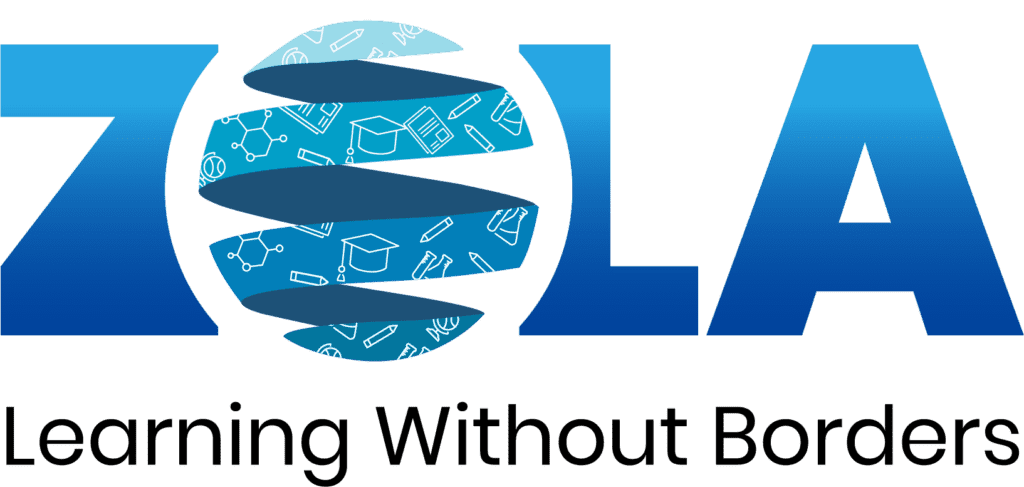
- American Curriculum
- Booster Clubs
- Registration
ZOLA – Learning Without Borders
Online Learning vs. Traditional Education: Which Is Right for You?

In today’s fast-paced, digital world, education has evolved beyond the confines of traditional classrooms. With the advent of the internet, online learning has emerged as a viable alternative to traditional education. But which path is right for you? In this comprehensive guide, we’ll weigh the pros and cons of online learning vs. traditional education to help you make an informed decision.
The Rise of Online Learning
Online learning, also known as eLearning or distance education, has gained immense popularity in recent years. It offers several advantages that make it a compelling option for many:
- Flexibility and Convenience One of the most significant benefits of online learning is flexibility. With online courses, you have the freedom to set your own schedule. This flexibility is particularly valuable for working professionals, parents, or individuals with busy lifestyles who want to earn a degree or acquire new skills without disrupting their daily routines.
- Accessibility Online courses are accessible from anywhere with an internet connection. This eliminates geographical barriers, allowing students to choose from a wide range of programs and institutions worldwide. For those in remote areas or countries with limited educational resources, online learning opens up a world of opportunities.
- Cost-Efficiency Online courses often cost less than traditional in-person programs. You can save on commuting expenses, textbooks, and accommodation. Additionally, many online courses offer financial aid or scholarships, making education more affordable for a broader audience.
- Diverse Learning Resources Online platforms offer a wealth of multimedia resources, such as videos, interactive quizzes, and forums. These diverse learning tools cater to different learning styles, making it easier for students to grasp and retain information.
Traditional Education: Time-Tested Benefits
Traditional education, on the other hand, has been the cornerstone of learning for centuries. It continues to offer unique advantages:
- In-Person Interaction Traditional education fosters face-to-face interaction with professors and peers. This interpersonal connection can lead to deeper understanding, immediate feedback, and valuable networking opportunities.
- Structure and Discipline In a traditional classroom setting, students adhere to a fixed schedule. This structured environment can help some individuals stay disciplined and focused on their studies.
- Hands-On Learning Certain subjects, like laboratory sciences and fine arts, require hands-on experience that is more readily provided in traditional settings. Practical training and lab work are integral components of these disciplines.
- Accreditation and Recognition Many employers and institutions still hold traditional degrees in high regard due to their long-standing reputation. Some careers and industries may require a traditional degree for specific roles.
Making the Right Choice
So, how do you decide which educational path suits you best? Consider the following factors:
Your Learning Style
Reflect on how you learn best. Do you thrive in a structured, in-person environment, or are you comfortable with self-directed, online learning? A Student’s learning style plays a crucial role in determining your preference.
Your Goals and Circumstances
Your career goals, lifestyle, and current circumstances should guide your decision. Online learning offers flexibility, making it ideal for those with job commitments or family responsibilities. Traditional education may be more suitable if you seek a hands-on experience or require a degree with specific accreditation.
Available Resources
Assess the resources at your disposal, including time, finances, and access to technology. Consider the cost, location, and reputation of the institutions offering the programs you’re interested in.
Program Suitability
Examine the program’s curriculum, format, and delivery. Some subjects are better suited for online learning, while others benefit from in-person instruction.
In the end, the choice between online learning and traditional education depends on your individual preferences and circumstances. Both approaches have their merits, and neither is a one-size-fits-all solution. It’s crucial to conduct thorough research, evaluate your goals, and weigh the pros and cons before making your decision.
At Zola Academy, we understand that every learner is unique. That’s why we offer a range of online courses designed to accommodate various learning styles and needs. Explore our diverse programs today and embark on your educational journey, whether you choose online learning or the traditional path.
In the evolving landscape of education, the right choice is the one that aligns with your aspirations and empowers you to reach your full potential
Register Now!
- September 29, 2023
- No Comments
Like this article?
ZOLA LEARNING ACADEMY
LEARN WITHOUT BORDERS
Quick links
Social media.
- 2024 @ Zola Global Learning Centre FZC LLC. Developed & Designed by Zola Solutions
- Terms & Conditions
- Privacy Policy

Niall McNulty
Online education vs traditional education – which one is better and why
Find out what the critical advantages and disadvantages of online learning vs a traditional education environment are, and why this matters!
As teachers and schools move to online education and away from a strict traditional education environment, what are the key differences between these two approaches to teaching and learning.
What is online education?
What is traditional education, discipline and self-motivation, flexibility, social interaction, online teaching vs classroom teaching, what is the advantage of online education, what are the disadvantages of online education, what are the advantages of traditional education, what are the disadvantages of traditional education.
Online learning takes place over the internet and is a form of distance learning. It can be teacher lead at a specific time (synchronous) or student-paced working through the material unguided (asynchronous). Content can be delivered as text, images and video, and features could include online assessment or interactive activities.
Traditional education occurs in a classroom with a teacher who plans and presents a particular topic lesson. The teacher can use various educational tools such as introducing information on a chalk or whiteboard, student presentations, group or partner work, and individual exercises or activities. Class quizzes or informal assessments can be held and homework assignments set.
What is the difference between online learning and a traditional classroom setup?
There are several critical differences between online and traditional classes. These are vital factors students consider when they choose one or the other.
A traditional classroom set-up provides a structured timetable for classes. You need to attend a class at a specific time or miss the lesson and the teacher’s information (there may also be other repercussions!). Motivation to learn comes from the teacher, whose task is to present information to the students in an engaging manner and fellow students who may discuss course content together before or after class. In an online education environment, the student sets the pace of learning. They need to be disciplined enough to set aside time each day to focus on completing course content.
In some cases, they must complete all components in an online course by a specific date. In other cases, this is open-ended. While there may be online discussion forums for students taking an online course, or the ability to video conference or instant message with other students, the student must motivate themselves to continue and complete their studies online.
A traditional class takes place at a specific location and a set time. Students are given a timetable of their classes for the week, and the teacher will expect them to attend the course at the specified time. If they miss it, the students will have missed the teacher’s lesson. There may be an opportunity to catch up on some work, but this catch-up work will, in most cases, not be of the same standard as the lesson presented. In some situations, if the student misses too many set classes, they might not be allowed to write the final exam. This time dependency makes the traditional education approach difficult for some students with outside commitments, such as family or work. In these cases, the online education approach provides much-needed flexibility. Students can log into a course at any time of the day or night and complete the course content at their own pace. They will receive the same lesson content as other students completing the course and not be penalized if they don’t log in simultaneously. Communication in these courses can be asynchronous via, for example, an online forum, where students can leave messages and reply to other students at any point. Students can fit in their learning as and when they have the time for courses without a set completion date. Most online courses have set completion requirements such as reading or viewing all material and completing an online assessment and not set times spent online. This means the flexibility offered by online learning is ideal for students who have full-time jobs or might need to care for a family member.
If you live in a small town in a developing country, you may not have access to a wide array of educational options. Similarly, if you are interested in studying a specialized subject or with a particular teacher, you might need to move to a city or town the school is located. Online learning solves this problem. Someone in a village in India and a suburb of London can access the same content online (assuming access to devices and the internet). This decouples location from the learning experience.
One of the main benefits of a traditional classroom environment is the interaction with the teacher and fellow students. Informal discussions, as well as group work and classroom interactions, can be called social learning . In an online learning environment , teachers can replicate these interactions through forums or breakaway rooms for group work; however, the informal interactions in the classroom , corridor or break room are difficult to recreate online. Some students also report feeling isolated when taking online classes as it is sometimes tricky studying via a screen and browser at home or work.
Studies have shown that both online and classroom teaching is effective. In some scenarios, online learning may even be more effective. This depends on factors such as the student, technology infrastructure and subject taken . One of the critical factors in a successful online learning experience is student engagement. In a traditional classroom, the teacher constantly monitors student engagement, asks certain students for feedback on a topic or if they have any questions.

Student engagement is key to successful online learning. Original project work that centres on compelling content, community and peer engagement, instructor presence, synchronous meeting capabilities, advanced video production, and social learning opportunities bridges new concepts to real-world applications.
- Choice – when you decide to enrol in an online course, the topics available for study are substantially more than in a traditional education environment. This means you can study subjects that are not available to students in your city or town, or specialist subjects only available from certain institutions.
- Costs – online education usually comes at a more affordable price than face to face or traditional education. This lower cost is because there are fewer physical infrastructure costs, and you don’t need to employ a teacher full time to conduct the class. However, more and more online courses are being offered at a cost equivalent to the price of a traditional college or school education.
- Flexibility – as mentioned above, flexibility is one of the main differences between a traditional and online education. It is also one of the main benefits for students who, for example, need to work or are not able to attend courses at a fixed time or location. This flexibility also allows students to choose subjects they are interested in but do not necessarily want to pursue as a career.
- Guest classes or lectures by experts – while it is possible to invite a professional or business leader to conduct a lesson in a classroom, this requires scheduling the course at a time available to the guest lecturer. It is much easier to ask them to run a lecture via Zoom or Google Meet , where they can take time out of their day but remain at their office or place of work. This also allows lecturers from across the country or the world to share their expertise with the class.
- Lesson recordings and notes – online courses come with the ability to record online lectures and make them available for repeated viewing by the student. Likewise, class notes and readings can be made available to the student digitally for repeated reference and adaptation and enhancement as required by the student to facilitate their learning. Lastly, digital resources can be quickly and easily updated with new or more relevant content as needed, meaning the student can access the latest information in their subject.
- Participation – participation rates can be higher in an online class, particularly when there are rules for online learning that require a certain number of interactions via different channels per student.
- Quality teachers-student interaction – if the instructor or teacher is comfortable using digital communication tools, the student could have more access to the teacher to ask questions or engage in discussion. This communication can be through email, instant messaging such as WhatsApp , or online forums and discussion groups.
- Cheating – some students cheat at assessments in both online and traditional classes. However, it is difficult for the teacher to monitor an online evaluation where students may have a browser open searching for answers or instant messaging other students to assist.
- Communication skills – listening to fellow students in class, discussing topics, defending arguments, and listening to others’ opinions develop interpersonal communication skills. This is one of the benefits of a traditional classroom setting, and these skills are difficult to develop in an online course, particularly when asynchronous.
- Procrastination – putting something off until the last minute is a classic trope of the student. However, in an online class that may not have set deadlines for submitting assignments or a completion date, it is much easier to procrastinate.
- Self-motivation – online students need to make the time and effort to complete their course requirements. With no set schedule and, in some cases, no teacher, self-motivation and time management skills are critical to a successful outcome for online learning.
- Social isolation – some students, particularly those who are not employed or involved in other activities, may experience some form of social isolation when participating in an online course. Even though there are chances to interact with the other students online, the informal conversations and discussions between students in a traditional classroom setting are difficult to replicate.
- Time commitment – when an online course is not instructor or teacher-led, there is sometimes substantially more reading or reference material to watch. This means that the student’s time commitment is more significant than a student taking a similar class in a traditional classroom setting.
- Confidence – in a classroom setting, where a group of students work together with a teacher on a problem, a sense of academic confidence is built in students around their ability to approach new topics.
- Group work – an essential part of the traditional classroom experience is the interaction between students and working together on group projects. These projects can be completed in an online environment but don’t allow for the same level of social interaction and informal learning in a classroom setting.
- Interpersonal skills – by sitting in a class with fellow students and learning to interact with a teacher, critical interpersonal skills are cultivated. These skills are helpful in other situations in students personal and professional lives.
- Pressure – a traditional classroom has a set schedule, with deadlines and set times to complete work. Students need to learn to work in high-pressured environments, which is a skill that is transferable to other areas of their lives.
- Public speaking – having to ask questions in an entire class or debate your point of view in front of a teacher builds confidence in a student’s public speaking ability. These skills are difficult to make in an online class, even one where Zoom presentations are required.
- Costs – there are higher costs incurred with a traditional classroom-based course. These include fees, which can be substantial, particularly at the college level, travel costs to and from the school or campus, and lost income for students working and needed to stop to complete their studies.
- Interactions – depending on the lecturer or teacher’s class size and personality, students could have limited direct interaction with them. For students who need remedial support or would like extension activities, this could be a problem.
- Lack of flexibility – with a set schedule, deadlines for assignments, required study hours and exams set on particular days, there is no flexibility for students who may need to work or care for their family. Likewise, a traditional education structure would have limited course options for a student to choose from.
4 thoughts on “Online education vs traditional education – which one is better and why”
Beautiful post to address the difference between online and traditional education. Yes, they both have their own glories and defects. Thank you for sharing the post.
Nice article! thanks for sharing such kind information with us. online education is the way of the future. Everyone has different experiences with online and traditional classes, and everyone will have their own preference when it comes to earning a degree. Both paths have pros and cons, and both are valued by modern employers across the industries.
Great read!! Thanks for sharing such a great blog.
I have been homeschooling my children and recently they have joined online school an they are doing well.
Leave a Reply Cancel reply

25,000+ students realised their study abroad dream with us. Take the first step today
Meet top uk universities from the comfort of your home, here’s your new year gift, one app for all your, study abroad needs, start your journey, track your progress, grow with the community and so much more.

Verification Code
An OTP has been sent to your registered mobile no. Please verify

Thanks for your comment !
Our team will review it before it's shown to our readers.

- School Education /
Difference Between Traditional Education and Online Learning
- Updated on
- Feb 6, 2024

The traditional form of education or classroom has been the cornerstone of academic learning for centuries. It is the physical sphere of learning in which students and teachers interact, exchange knowledge and experience the world around them. However, with the advent of the internet and the proliferation of digital technology, online learning has become increasingly popular. On top of them, the COVID-19 pandemic gave rise to something more unique; distant learning. The global pandemic forced schools, colleges, and all other academic institutions to conduct virtual classes.

In this blog, we will explore the difference between traditional education and online learning and examine the pros and cons of each.
Table of Contents
- 1 What is Traditional Education?
- 2 What is Online Learning?
- 3.1 Flexibility
- 3.2 Learning Environment
- 3.3 Cost of Learning
- 3.4 Social and Interpersonal Interaction
- 3.5 Assessment
Check out the difference between online and offline classes with Online Classes vs Offline Classes: What is Better?
What is Traditional Education?
Traditional education is delivered within the four walls of a classroom. In this mode of learning, teachers and students are physically present in the classroom. Classes are conducted at specific times. In this environment, study materials are provided in physical form and students get feedback immediately. Additionally, teachers can assist students in their tasks and monitor their progress in front of their eyes. A physical learning environment provides immense opportunities for students to engage in group activities and build strong relationships with their classmates and teachers.
Also Read: Modern Education: Meaning, Purpose, Benefits, in India
What is Online Learning?
Education and learning that happen over the internet are termed Online learning, online education or virtual learning. In online classes , teachers or instructors impart education to students or learners through virtual platforms like Google Meet, Zoom, Moodle, and Microsoft Teams. These platforms enable students and teachers to contact each other through audio and video formats. PDFs, images, or videos. Online classes have become prevalent after COVID-19. Additionally, the surging internet penetration and increasing use of mobile phones and computer systems have motivated universities, colleges, schools, and coaching institutions to introduce online courses.
Also Read: Short-Term Courses Online
Listed below are some of the differences between traditional education and online learning:
Flexibility
Traditional education follows a set schedule that students must adhere to. This can be challenging for students who have other commitments and may not be able to attend classes at a particular time.
Online learning, on the other hand, offers students more flexibility in terms of when and where they can access course materials and complete coursework. Students can access course materials at any time of day and can complete coursework at their own pace, as long as they meet the course deadlines. This flexibility is particularly useful for students who have other commitments, such as work or family responsibilities.
Also Read: Best Education System in the World: Top 20 Countries
Learning Environment
One of the most significant differences between traditional education and online learning is the learning environment. Traditional education takes place in a physical classroom where students attend lectures and interact with their teachers and classmates face-to-face. On the other hand, online learning takes place in a virtual environment accessible through the Internet.
In a traditional classroom, students have direct access to teachers and can ask questions and get immediate feedback. They can also participate in group discussions and share ideas and knowledge with their classmates. In contrast, online learning can be more solitary, as students may not have the same level of direct interaction with teachers and classmates.
Check Out: Empowering Student-Centered Learning: Benefits and Tips
Cost of Learning
Traditional education typically involves higher expenses due to the physical infrastructure and resources required.
Whereas, online learning may require students to have access to a computer and a reliable internet connection, which can be an added expense. However, Online learning can be less expensive than traditional education because students can avoid expenses such as commuting, housing, and meal plans.
Also Read: Free Online Courses with Certificates
Social and Interpersonal Interaction
Another significant difference between traditional education and online learning is the level of social and interpersonal interaction. In a traditional classroom, students have direct interaction with their teachers and classmates, which can facilitate the exchange of ideas and knowledge. They can also engage in group activities and projects, which can help them develop teamwork and leadership skills.
In online learning, however, students may not have the same level of social and interpersonal interaction. While they can interact with their teachers and classmates through online forums and videoconferencing, it may not be as effective as face-to-face interaction.
Do Read: All About Teaching-Learning Material
Traditional education typically involves in-person exams and assessments, which can be more effective at measuring students’ knowledge and understanding of course material.
In contrast, online learning may involve online exams, quizzes, and other forms of assessment that can be completed remotely. While these assessments can be convenient, they may not be as effective at measuring students.
Also Read: What is Quality Education?
Related Reads
Ans. Traditional education is delivered within the four walls of a classroom. In this mode of learning, teachers and students are physically present in the classroom. Whereas, in online classes, teachers or instructors impart education to students or learners through virtual platforms like Google Meet, Zoom, Moodle, and Microsoft Teams.
Ans. Some of the key differences between traditional and online classes are Flexibility, Learning Environment, Assessment Process, Cost of Learning, and Social and Interpersonal interactions.
Ans. Flexibility and low cost are the major advantages of online classes.
Related Articles
This was all about the difference between traditional education and online learning. To learn more about school education , stay tuned to Wings by Leverage Edu .
Ankita Singh
Ankita is a history enthusiast with a few years of experience in academic writing. Her love for literature and history helps her curate engaging and informative content for education blog. When not writing, she finds peace in analysing historical and political anectodes.
Leave a Reply Cancel reply
Save my name, email, and website in this browser for the next time I comment.
Contact no. *

Connect With Us

25,000+ students realised their study abroad dream with us. Take the first step today.

Resend OTP in

Need help with?
Study abroad.
UK, Canada, US & More
IELTS, GRE, GMAT & More
Scholarship, Loans & Forex
Country Preference
New Zealand
Which English test are you planning to take?
Which academic test are you planning to take.
Not Sure yet
When are you planning to take the exam?
Already booked my exam slot
Within 2 Months
Want to learn about the test
Which Degree do you wish to pursue?
When do you want to start studying abroad.
January 2024
September 2024
What is your budget to study abroad?

How would you describe this article ?
Please rate this article
We would like to hear more.
Have something on your mind?

Make your study abroad dream a reality in January 2022 with
India's Biggest Virtual University Fair

Essex Direct Admission Day
Why attend .

Don't Miss Out
We use cookies on our website to support technical features that enhance your user experience, and to help us improve our website. By continuing to use this website, you accept our privacy policy .
- Student Login
- No-Cost Professional Certificates
- Call Us: 888-549-6755
- 888-559-6763
- Search site Search our site Search Now Close
- Request Info
Skip to Content (Press Enter)
Online vs. Traditional Education: What You Need to Know
By Will Erstad on 08/16/2017
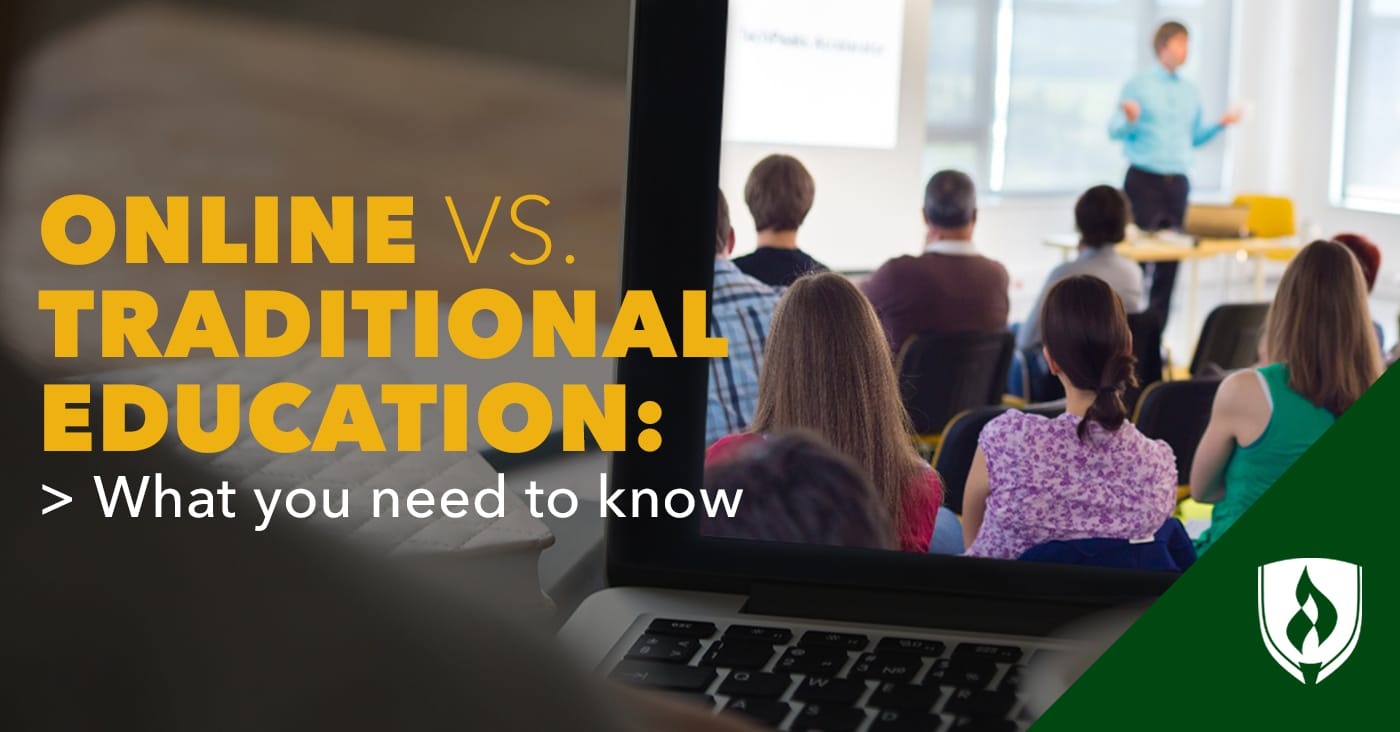
The word “college” might make you think of students hanging out in dorm rooms or gathering for classes in enormous lecture halls. But that depiction is becoming increasingly out-of-date as technology provides for more and more ways to learn.
In fact, online and distance learning has steadily grown in popularity among college students, but does that mean it’s a good choice for you? In order to help you answer that question, take some time to compare and contrast traditional versus online education.
Comparing online versus traditional education
Both online education and its traditional counterpart have pros and cons, so it’s important for students to understand what to expect before they step foot—or log into—the classroom. We focused this side-by-side comparison on three key areas that make an impact on a student’s experience. We’ll also take a closer look at what a “blended learning” model has to offer.
Online vs. traditional education: Flexibility
One of the key components to consider when weighing the options is the amount of time you have every day to dedicate to schoolwork. Are you willing and able to attend college full-time or do you need more flexibility to work around your busy schedule?
Online education:
A benefit to taking online courses is that they offer flexibility to the student. This is a great option for those who already have time commitments with family and work. Online classes will mold with your schedule—and allow you to log into your online course at a time that works best for you, as opposed to having to attend a lecture at a specific time.
Most online courses will follow a weekly format where students are expected to log in, read course materials, contribute to online class discussions and complete assignments prior to the beginning of the next week. You’ll still have plenty to do for each class—but you’ll have more options for fitting this work in around other commitments.
Traditional education:
Generally speaking, this is the best option for students who have a little more freedom in their schedules. That said, traditional students do have some flexibility in their scheduling in that some schools offer night classes or classes that follow a schedule where they meet only once per week.
One easy-to-overlook factor when it comes to scheduling is travel time to campus—a long commute can certainly make schedules difficult, especially if you’re planning on working while in school .
Online vs. traditional education: Discipline & self-motivation
Something else to consider while weighing your college options is your level of self-discipline. Both traditional and online education certainly require some discipline to succeed, but there can be significant differences in how learning is structured. These structural differences can have a significant effect on your ability to stay on track.
The increased flexibility of online learning comes with a bit of a trade-off—you’ll need to be highly self-motivated. All college classes require students to keep up on required reading and assignments, but some students may struggle to stay motivated when learning from the comfort of their home.
The best online students develop strategies for staying up to date on their coursework. Things like setting aside time every week for studying and creating a work space with minimal distractions can help immensely.
When it comes to discipline and motivation, traditional education does have an advantage in the eyes of many. The structured schedule of attending class a handful of times per week and having routine face-to-face interactions with instructors can help keep students on task. Students in traditional, on-campus settings have more opportunities to be reminded of upcoming assignments, which can help if you tend to procrastinate on large, time-consuming assignments.
Online vs. traditional education: Social interaction
One final area to consider is the level of social interaction you’re hoping to have as you earn your degree. Do you need interaction from your peers and instructors to succeed and stay motivated? Or do you thrive in an independent study environment?
Social interaction with instructors and other students, while not as common in online courses, still happens regularly. The biggest difference is in the form it takes, with many online student interactions happening via video chat or through online discussion posts.
Some courses may also offer pre-recorded videos of the same lectures given to traditional, on-campus students. If you’re a social learner who likes to ask questions and pick the brains of your instructors, these video lectures can help you earn a deeper understanding of assigned reading materials.
Despite technological advances, traditional education is still likely the better option for those who thrive on face-to-face communication. Seeing and interacting with your instructors on a regular basis can be motivating for some—it’s a little easier to go the extra mile if you know your instructor is likeable and invested in your education. Traditional, in-class settings may also offer more opportunities for spur-of-the-moment questioning or interesting tangents that may help a concept “click” in the minds of students.
Online vs. traditional education: The blended education model
By now, it’s probably becoming clear to you that both online and traditional education each have their perks. So is there a way to get the best of both worlds? One option that is increasing in popularity is called “blended learning.”
In this format, curriculum is designed to implement both traditional, in-person learning and online coursework. The implementation of this can vary greatly, depending on the subject and instructor. But as an example, instructors may require only meeting once weekly for lectures, while assigning projects or other activities for students to complete online on their own time. This allows students to receive some of the positives from face-to-face social learning while still allowing for scheduling flexibility.
Another example would be a program that offers some courses on campus and others online. For example, a nursing program may include an online anatomy course, and a nursing simulation lab on campus. The idea here is that certain courses involve material that is conducive to online learning, while other lessons can only be taught in a physical classroom or lab.
The decision is yours
In the case of online versus traditional education, there is no right or wrong answer. Much of it comes down to personal preference and knowing how you learn best. These learning formats can all be very effective, no matter your personal learning style and situation.
Ready to get started with a new college experience? Find a campus location near you or check out the online program offerings of Rasmussen University.
EDITOR’S NOTE: This article was originally published February 2014 and has been updated to reflect information from 2017.
- Share on Facebook
- Share on Twitter
- Share on Pinterest
- Share on LinkedIn
Request More Information
Talk with an admissions advisor today. Fill out the form to receive information about:
- Program Details and Applying for Classes
- Financial Aid and FAFSA (for those who qualify)
- Customized Support Services
- Detailed Program Plan
There are some errors in the form. Please correct the errors and submit again.
Please enter your first name.
Please enter your last name.
There is an error in email. Make sure your answer has:
- An "@" symbol
- A suffix such as ".com", ".edu", etc.
There is an error in phone number. Make sure your answer has:
- 10 digits with no dashes or spaces
- No country code (e.g. "1" for USA)
There is an error in ZIP code. Make sure your answer has only 5 digits.
Please choose a School of study.
Please choose a program.
Please choose a degree.
The program you have selected is not available in your ZIP code. Please select another program or contact an Admissions Advisor (877.530.9600) for help.
The program you have selected requires a nursing license. Please select another program or contact an Admissions Advisor (877.530.9600) for help.
Rasmussen University is not enrolling students in your state at this time.
By selecting "Submit," I authorize Rasmussen University to contact me by email, phone or text message at the number provided. There is no obligation to enroll. This site is protected by reCAPTCHA and the Google Privacy Policy and Terms of Service apply.
About the author
Will Erstad
Will is a Sr. Content Specialist at Collegis Education. He researches and writes student-focused articles on a variety of topics for Rasmussen University. He is passionate about learning and enjoys writing engaging content to help current and future students on their path to a rewarding education.

Posted in Online Learning
- online learning tips
Related Content

Carrie Mesrobian | 06.06.2022

Will Erstad | 08.12.2021
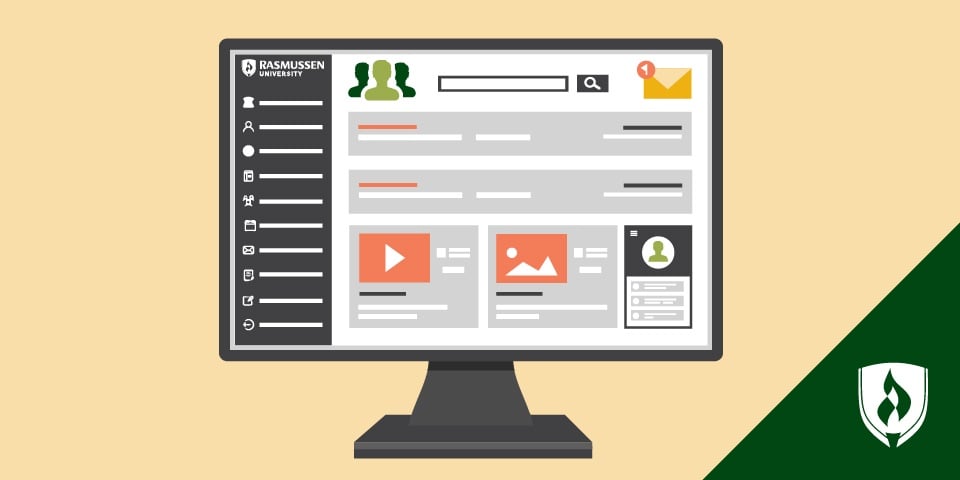
Carrie Mesrobian | 04.12.2021

Will Erstad | 10.05.2020
This piece of ad content was created by Rasmussen University to support its educational programs. Rasmussen University may not prepare students for all positions featured within this content. Please visit www.rasmussen.edu/degrees for a list of programs offered. External links provided on rasmussen.edu are for reference only. Rasmussen University does not guarantee, approve, control, or specifically endorse the information or products available on websites linked to, and is not endorsed by website owners, authors and/or organizations referenced. Rasmussen University is accredited by the Higher Learning Commission, an institutional accreditation agency recognized by the U.S. Department of Education.
An official website of the United States government
The .gov means it’s official. Federal government websites often end in .gov or .mil. Before sharing sensitive information, make sure you’re on a federal government site.
The site is secure. The https:// ensures that you are connecting to the official website and that any information you provide is encrypted and transmitted securely.
- Publications
- Account settings
Preview improvements coming to the PMC website in October 2024. Learn More or Try it out now .
- Advanced Search
- Journal List
- J Educ Health Promot
Online classes versus traditional classes? Comparison during COVID-19
Sanjana kumari.
Department of Microbiology, All India Institute of Medical Sciences, New Delhi, India
Hitender Gautam
Neha nityadarshini, bimal kumar das, rama chaudhry, background:.
Nowadays, the use of Internet with e-learning resources anytime and anywhere leads to interaction possibilities among teachers and students from different parts of the world. It is becoming increasingly pertinent that we exploit the Internet technologies to achieve the most benefits in the education.
MATERIALS AND METHODS:
This study compares the difference between traditional classroom and e-learning in the educational environment. Medical undergraduate students of our institution were enrolled to compare between the online versus traditional method of teaching through questionnaire.
Forty percent of students found the online lecture material difficult to understand. 42.6% of respondents found it difficult to clear the doubts in online teaching; 64.4% of the participants believed that they have learned more in a face-to-face learning.
CONCLUSION:
In this study, we concluded that online mode offers flexibility on timing and delivery. Students can even download the content, notes, and assignment. Despite all the advantages offered, there is a general consensus that no technology can replace face-to-face teaching in real because in this, there will be visual as well as verbal discussion. Looking at the uncertainty of the current scenario, it is difficult to predict how long online classes will have to continue. Hence, it is of paramount importance that we assess the effectiveness of online classes and consequently take measures to ensure proper delivery of content to students, especially in a skilled field like medicine, so we concluded that face-to-face learning is of utmost importance in medical institutions.
Introduction
In these current times of information technology, students in higher education depend on a computer to do most of the work. Most higher educational institutions are also aware that using network technology can create, foster, deliver, and facilitate learning and enhance students’ experience and knowledge. Hence, the rapid developments and growth of information and communication technology have had a profound influence on higher education. E-learning means that teachers and students perform and complete the task through Internet, a method that is relatively different from traditional classroom.[ 1 ] According to a report published in 2011, over 6.1 million students were taking at least one or more online courses in 2010, with 31% of all students involved in higher education being taking at least one online course. In a more recent report, the number had increased by approximately 570,000 for a total of million students taking at least one or more online course. The report further shows and predicts that the number of students taking at least one online course is at its highest level, with the current growth rate of 9.3%, and shows no evidence of the trend slowing in the foreseeable future.[ 2 ] This trend has left many questions that need to be answered regarding what factors are driving this shift and how this shift will ultimately affect institutions across the country.
The history of online learning is particularly interesting because it not only shows the contributions of individuals but also institutions to the advancement of education and the sharing of that knowledge and skills on a global scale. As we briefly review the historical development of this subject, it is important to indicate that many authors use the terms “distance learning,” “distance education,” “online learning,” and “online education” interchangeably,[ 3 ] as is the case in this paper.
Online courses are courses where at least 80% of the content is delivered online without face-to-face meetings, whereas face-to-face instructions are a learning method where all content is delivered only in a traditional face-to-face setting.
Hybrid courses, on the other hand, combine the benefits of face-to-face learning with the technology often used in online courses. 30%–79% of the course is delivered online.
Web-facilitated courses are the ones where 1%–29% of the course is delivered online. Although this type of course is actually a face-to-face course, it uses a web-based technology to supplement the face-to-face instruction provided to students.
This study is to compare the effectiveness of a medical undergraduate, online microbiology course to a traditional in-class lecture course taught by the same instructor as measured by response to the pre-formed questionnaire.
Materials and Methods
Study design and setting.
It was a prospective study. Study participants were provided with a questionnaire to do comparison between the online versus traditional method of education. Due to COVID-19 pandemic restrictions, traditional classroom teaching was shifted to online teaching. In traditional classroom setting, lecture duration ranged typically from 45 min to 1 h, with few minutes dedicated for doubt clearing or discussion at the end. Course content was delivered by the faculty verbally, assisted by projected PowerPoint presentations. In contrast to this, course content in online mode was delivered through streaming/video-conferencing software. Students could access it through their electronic devices: phones, tablets, and laptops via a link. The content for both educational modes—online and traditional classroom-based—was identical as it was taught by the same teaching faculty. Duration of lectures remained the same as well.
Study participants and sampling
Medical undergraduate students at the Department of Microbiology, All India Institute of Medical Sciences, New Delhi, India, were the study participants. Students were the same for both modes of teaching. Out of a total strength of 101, 75 students participated.
Data collection tool and technique
A questionnaire was designed covering questions such as whether online classes provide better understanding of course content, is it easier to pay attention to lectures in online classes, whether online classes are convenient to attend, is it easier to clear doubts through online discussions, do the students face technical issues during online classes, are the students more likely to attend online classes than traditional classes, is it easier to get distracted during online classes than during traditional classes, are the students more likely to stick to the time table of traditional classes as compared to online classes, do the students miss social interaction with peers and teachers in case of online classes, and do lack of face to face communication makes online classes less engaging.
Printed copies of the questionnaire covering all the questions were provided to all students, and a filled questionnaire was collected from all participating students. All the participant students were requested to fill the questionnaire individually. Response to all the questions from all participant students was entered in Microsoft Excel and analyzed. Active intervention was not attempted in the study, before COVID-19 pandemic traditional classroom teaching was the method of teaching which was changed to online teaching due to restrictions of the COVID-19 pandemic.
Ethical considerations
Consent was taken from all students who participated in the study. Ethical consideration was not required as no active change in teaching modality was there due to the study.
Participants in this study were medical undergraduate students; the questionnaire was sent to a total of 101 students. A total of 75 students participated; female (26.6%) and male (73.3%) were in the age group of 18 and 30 years. We aimed to evaluate students about their perceptions regarding ease or difficulty of online lecture materials, assignments, and online navigation.
Questionnaires were made regarding the students’ concern about understanding of course content, attention scale, convenience, doubts in class, technical issue, distraction during the class, and clarification of the doubts.
Survey reported that 25.3% of students found that online lecture material was satisfactory and easy to understand, while over 40% of students found the lecture material difficult to understand. 42.6% of students found that online assignments were difficult to clear the doubts, while 45.3% found difficulty in attention span during the online classes. Similarly, 64% reported difficulty in the discussion in online classes with the teachers and understanding the course, as shown in Table 1 . The findings further indicate students’ perceptions about the material are viewed as being rigorous even despite the ease of navigation. No comparative analysis was done between the rigor for face-to-face classes and online offerings. However, students perceived a difference between the amounts learned in the two modes even though course content was equivalent.
Questionnaire-based response from students
*Subjective answer mentioned in results. Total number of participants n =75
In academic environments, course organization and presentation are key factors that can either attract or distract students. Students need clarity and relevance in the materials presented to them. 24% of the participants agreed that the online courses were well presented and organized. On the other hand, 64.4% of the participants believe they have learned more in a face-to-face learning environment than in an online setting. Online learning is not always a seamless experience for students. Users encounter many problems including Internet interruption, system upgrade downtime, and instruction and organization to unreliable Internet connection.
Within the last 20 years, the components of learning via computers have challenged the view that the traditional lecture is necessarily the most appropriate means of facilitating learning in a university environment. People found that e-learning has its own advantages on learning outcomes through researches on comparison research about differences between e-learning and traditional classroom.
Over the past decades, most institutions have expanded the list of courses being offered online, and a growing number of students favor online courses over traditional face-to-face courses. This is due in part to the flexibility that online courses provide, the convenience, and a host of other factors. Respondents in this study indicated that offering more online courses would not be that helpful. Some of the students perceived their online experience as being positive despite multiple problems in the online courses, including lack of understanding of the content of materials, limited access, and poor technological infrastructure. In addition, the majority of students found the lecture materials and assignments difficult to understand. These findings suggest that institutions need to address their students’ desire for more flexible, technology-oriented educational platforms and to exert greater efforts to eliminate obstacles that might hinder the smooth utilization of these technologies.
In our study, the responders faced many difficulties. There should be orientation session for teachers and students on how to adapt to online classes and make learning fun and effective through classes before beginning online sessions for students. To ensure discipline is maintained in class, many educational institutions have issued e-classroom etiquette. It includes being properly dressed, being seated at a desk, and no interruptions from parents during the class. Classroom can be split into multiple batches so that it is easier to keep track of students in a session.
A study by Alsaaty et al. [ 3 ] compared and found out online experience as being positive despite multiple problems in the online courses. Thomas et al. [ 4 ] conducted a similar study where he compared students and found out Internet-based course showed higher performance of students on class-based course. Chen et al. [ 5 ] conducted another study where student perceptions in a MBA accounting concluded that the traditional classrooms would continue to offer benefits that cannot fully be obtained in any other manner. However, gaps in process effectiveness will continue to be narrowed as technology becomes friendlier for both instructor and students.
Limitation and recommendation
Since this was a questionnaire-based study, possibility of the participants misinterpreting certain questions cannot be ignored. Response rate was about 75%. Although efforts were made to include open-ended questions, some questions were multiple-choice question based which could have limited the response of participants to few options. Future studies on this subject could use a face-to-face interview approach to get a better response rate and include more subjective and personalized responses of participants. In addition, there was only one time collection of data in this study. Further studies are needed to see if online classes can be an integral part of medical education, once the restrictions due to pandemic ease down.
One of the advantages the online mode offers is its flexibility in timing and delivery. They can even download the content, notes, and assignment. They can easily participate in discussion due to less anxiety and do group discussion and permanent record of feedback. Other advantages for students include not needing to commute. Despite all the advantages offered, there is a general consensus that no technology can replace traditional teaching in real because in this, there will be visual as well verbal discussion. Practical learning through in-hand training, demonstrations, and skill development, which of utmost importance in medical learning, is not possible through online teaching. Teachers might be less conversant and have apathy toward online teaching. It is difficult to keep track of student's attention. Doubt-clearing is hampered as well. Looking at the uncertainty of the current scenario, it is difficult to predict how long online classes will continue. Hence, it is of paramount importance that we assess the effectiveness of online classes and consequently take measures to ensure proper delivery of content to students, especially in a skilled field like medicine.
Financial support and sponsorship
Conflicts of interest.
There are no conflicts of interest.
Acknowledgment
We are thankful to the Academic Section of All India Institute of Medical Sciences, New Delhi, India, for their support.
- Trending Now
- Foundational Courses
- Data Science
- Practice Problem
- Machine Learning
- System Design
- DevOps Tutorial
Difference Between Traditional and Online Education
- Difference between Traditional Marketing and Digital Marketing
- Difference between Traditional Processing and Stream Processing
- Difference between Traditional Commerce and E-commerce
- Difference between E-business and Traditional Business
- Difference Between Online and Real-Time Systems
- Difference between Batch Processing System and Online Processing System
- Traditional Marketing : Meaning, Importance, Channels, Advantages and Disadvantages
- 10 Best Platform to Create and Sell Online Courses in 2023
- Co-Education - History, Advantages & Disadvantages
- Online vs Offline - Which One is Better for GATE Preparation?
- Online Degrees - Beneficial or Non-Beneficial
- Advantages of Online Preparation for Class 12 CBSE Board
- 5 Ways to Make Online Education Effective in 2020
- 5 Reasons Why Online Learning is the Future
- 5 Online Education Etiquette That You Must Know in 2020
- 6 Ways Artificial Intelligence Will Change Education in the 2020s
- Online Learning vs Classroom Learning - What is Better for You?
- 10 Tips For Students Who Are New To Online Learning
- How can you earn money in student life ?
- Difference between BFS and DFS
- Differences between TCP and UDP
- Difference between comparing String using == and .equals() method in Java
- Stack vs Heap Memory Allocation
- Differences between JDK, JRE and JVM
- Differences between Procedural and Object Oriented Programming
- Difference between Process and Thread
- Differences between IPv4 and IPv6
- Difference Between Call by Value and Call by Reference in C
- Difference between C and C++
Education is defined as the process of gaining knowledge, skills, and values with the help of various methods, experience, and teaching-learning practices. In today’s world of modernization, education plays a very important role in making an individual’s personal and professional growth and with the advancements in technology, the options for pursuing education have expanded significantly.
Difference Between Online and Traditional Education
What is online education.
Online education is the process of delivering content through the Internet and various digital platforms using electronic devices such as laptops, desktops, tablets, and mobile devices. Online learning is also known as e-learning or distance learning. Online learning enables students or learners to learn from their remote places using mobile devices.
The students can access the study materials, clear their doubts, submit assignments and give exams online without being present physically in the classroom.
Pros of Online Education
- Flexibility: Flexibility is the major advantage of online education. The user can access their study materials whenever required and join the online classroom sessions from their remote locations.
- Multiple Learning Options: Online education provides multiple options for students. They can refer to various study materials such as videos, online notes, and quizzes. They can study only the topic they want to or are required.
- Cost-effectiveness: Online education is more cost-effective as compared to traditional means. It reduces the traveling expenses, and the need to purchase new books and other study materials.
- Accessibility: Accessibility is provided by online education. Students can attend or see the pre-recorded videos whenever it is feasible for them to do. It is efficient for working professionals and students at longer distances.
Cons of Online Education
- Technical Challenges: Online education has some limitations where the technical challenge is the biggest issue. It can be challenging if it has issues such as lack of internet connectivity, electricity failure, and mobile devices related issues.
- Lack of face-to-face interaction: Online education limits face-to-face communication between students and staff.
- Limited hands-on experience: Online education limits the hands-on experience. Some practical-related subjects such as laboratory-based science practicals and art discipline-related practicals.
- On-time availability of staff: In the case of online education, the availability of staff on time is a major issue. If the instructor is not available and unable to respond to queries creates a gap within them and student’s doubts are not cleared.
What is Traditional Education?
Traditional education is the learning process where students attend the classes physically and staff or instructors teach them in person. Traditional education is also known as classroom-based learning. Traditional education is the form of education being carried out for many centuries. Many people today still trust and rely more on traditional education due to the availability of staff to teach and clear doubts immediately.
During traditional education, students can even engage themselves in other extra co-curricular activities.
Pros of Traditional Education
- Face-to-face interaction with the staff: Traditional education provides with face to face interaction of the students with their staff. The students can immediately clear their doubts and gain proper information.
- Practical learning experience: Traditional education provides a practical learning experience. For practical related subjects such as science that are to be performed practically.
- Interpersonal skills development: Traditional education helps to develop other interpersonal skills. Due to traditional learning, the students can participate in different co-curricular activities and enhance their interpersonal skills.
- Degree from a recognized university: The traditional education school is being recognized and affiliated by various recognized universities and governments. Therefore the degree achieved after its completion is also recognized.
Cons of Traditional Education
- Limited flexibility: Traditional education provides limited flexibility. The students need to attend classes regularly and within the given time.
- Not cost-effective: Traditional education is less cost-effective as compared to online education. It requires more investment in allowing students to participate in other school activities and develop tuition, exams, and other fees.
- Limited course and study material: In traditional education, the students need to study only the courses offered by institutes, and the learning materials provided are also less as compared to online education.
- Geographical constraints: The major problem with traditional education is geographical constraints. The students need to visit the institutions regularly and on time.
Traditional and online education both have their unique advantages and disadvantages. The choice between the two depends on individual preferences, learning styles, and circumstances. Traditional education offers face-to-face interaction, structure, and networking opportunities but may lack flexibility and incur higher costs. On the other hand, online education provides flexibility, accessibility, and cost-effectiveness but requires self-discipline and may lack immediate personal interaction. Ultimately, it is important to consider these factors when making an informed decision about the most suitable approach to education.
Please Login to comment...
Similar reads.
- Difference Between

Improve your Coding Skills with Practice
What kind of Experience do you want to share?

IMAGES
VIDEO
COMMENTS
Learn the differences between online school and traditional school, and how to choose the best option for your goals and preferences. Compare the advantages and disadvantages of online education, such as affordability, flexibility, location independence, and fewer distractions.
A comprehensive exploration of the advantages and disadvantages of online programs and traditional education, highlighting their advantages and disadvantages to help professionals make informed decisions. Learn about the flexibility, accessibility, variety, cost-effectiveness, quality, and interpersonal interaction of online programs, and the structured learning environment, direct interaction, networking opportunities, and recognition of traditional education.
Online learning has been viewed as . the disruptive innovation in higher education today, with traditional classroom instruction at risk of being replaced by superstar professors teaching elabourate courses developed by teams - or by Massive Open Online Courses (MOOCs) offering instruction to students worldwide (see, e.g., Christensen and Eyring 2011, Cowen and Tabarrok 2014).
Now a report from UNESCO, the United Nations' educational and cultural organization, says that overreliance on remote learning technology during the pandemic led to "staggering" education ...
This study compares university students' performance in traditional learning to that of online learning during the pandemic, and analyses the implications of the shift to online learning from a faculty's perspective. The Quick-Response Research method using Google Documents was used with 104 faculty members chosen on convenience sampling in ...
Online courses often come at a lower cost compared to traditional education, as they eliminate expenses associated with commuting, campus facilities, and other overheads. Additionally, online education can be more accessible for individuals who face geographical constraints or have limited mobility. Evaluate your budget and accessibility ...
Learn the pros and cons of online education and traditional education, and how to compare them based on flexibility, social interaction, discipline, and location. Find out how WGU offers a flexible, online, and affordable option for higher education that suits your needs and goals.
Learn how online and traditional education compare in terms of learning outcomes, participation, critical thinking, and student satisfaction. Read the insights and findings of various scholars who have studied and taught online and traditional courses.
Online learning is the education that takes place over the Internet, while traditional learning is the education that occurs in a physical classroom. Learn the advantages and disadvantages of both methods, the statistics on online and traditional learning, and the benefits of online education at Potomac University.
Here are some advantages of online education: 1. Flexibility and Convenience. One of the most significant advantages of online education is the flexibility it offers. With online classes, you have the freedom to learn at your own pace. Course materials are posted online in advance, allowing you plenty of time to complete assignments by their ...
Many traditional degree-seeking students returned to in-person learning when schools reopened in 2021, but online education as a whole continued to grow. The World Economic Forum reports that in ...
Cost-Efficiency. Online courses often cost less than traditional in-person programs. You can save on commuting expenses, textbooks, and accommodation. Additionally, many online courses offer financial aid or scholarships, making education more affordable for a broader audience. Diverse Learning Resources.
Online education is a form of distance learning that occurs over the internet and is teacher-led or self-paced. It offers flexibility, discipline, location and social interaction. Traditional education is a form of classroom-based learning that occurs at a specific time and location and is teacher-led or student-paced. It offers structure, discipline, location and social interaction.
Ans. Traditional education is delivered within the four walls of a classroom. In this mode of learning, teachers and students are physically present in the classroom. Whereas, in online classes, teachers or instructors impart education to students or learners through virtual platforms like Google Meet, Zoom, Moodle, and Microsoft Teams. Q2.
Learn the differences and similarities between online and traditional education, and how to choose the best option for your learning style and goals. Compare factors such as flexibility, cost, quality, support and more.
Learning Styles: Online education can cater better to individual learning styles and paces. However, traditional education offers a more immersive and interactive environment, critical for younger ...
Study participants were provided with a questionnaire to do comparison between the online versus traditional method of education. Due to COVID-19 pandemic restrictions, traditional classroom teaching was shifted to online teaching. In traditional classroom setting, lecture duration ranged typically from 45 min to 1 h, with few minutes dedicated ...
Cost-Effective: Online courses are often more affordable than traditional education because they eliminate expenses related to commuting, on-campus housing, and certain campus fees. Self-Paced ...
Learn the differences and similarities between online and traditional classes, and how to choose the best option for your learning style and schedule. Compare the flexibility, independence, pace, applicability, and cost of both approaches, and see examples of online courses offered by Pacific College.
Traditional education often followed a rigid structure, with fixed schedules and standardized curricula. Online learning shattered these constraints by offering flexibility and customization ...
Education is a fundamental aspect of human development, and the methods of acquiring knowledge have evolved significantly over the years. With the advent of technology, online learning has gained popularity as an alternative to traditional classroom-based learning. Online learning offers flexi
In traditional education, the classes are attended physically at specified locations. Learning Materials. In online education, the learning materials are in digital form such as videos, audiobooks, or in the form of pdf, etc. In traditional education the main source of learning materials is books. Cost Effectiveness.
Online education offers flexibility and accessibility, while traditional education provides structure and networking opportunities. The key is to find the right balance that aligns with your career goals and learning style. Whether you choose online, traditional, or a hybrid approach, remember that the pursuit of knowledge and skills is the key ...